Gustav Klimt has always been one of my favourite painters. There is something about his golden dreamlands that ensnares the senses. When I saw The Kiss in person at the Belvedere Museum in Vienna for the first time, I was floored. I had seen it many times online and in books but seeing it in real life took my breath away. The amount of gold was staggering. It felt like it had been carved from gold instead of painted with it. It truly did shimmer and shine when you looked at it. The couple in the centre almost lost within this mesmerizing kaleidoscope.
Klimt was a man who broke the rules and was somewhat of a rebel in the art community. He moved away from the standards of the time and found a like group of people who would transform the world of art forever. And above all else, Klimt found a way to weave eroticism into all his works, either subtlety…or not so subtlety. Even today, his paintings stir something deep down inside of all us. Immersive Klimt takes the audience on a journey throughout the life of Gustav Klimt. To see his beginning, inspiration, fellow painters, and most importantly, the women who were his great muses!
- How Much are Tickets?
- How Long is the Show
- Review of Immersive Klimt
- Is It Worth It?
- The Life and Art of Gustav Klimt
- Klimt's Young Life
- Viennese School of Arts and Crafts
- The Golden Age of Vienna
- University of Vienna's Great Hall
- Philosophy, Jurisprudence and Medicine
- Founding the Vienna Secession
- Nuda Veritas
- Emilie Louise Flöge
- Mermaids and Serpents
- Water Serpents
- Judith and the Head of Holofernes
- Beethoven Frieze 1901
- Love, Art and Music
- The Ravenna Awakening
- Portrait of Adele Bloch-Bauer
- The Tree of Life 1905
- The Kiss
- En Plein Air
- Klimt's Death
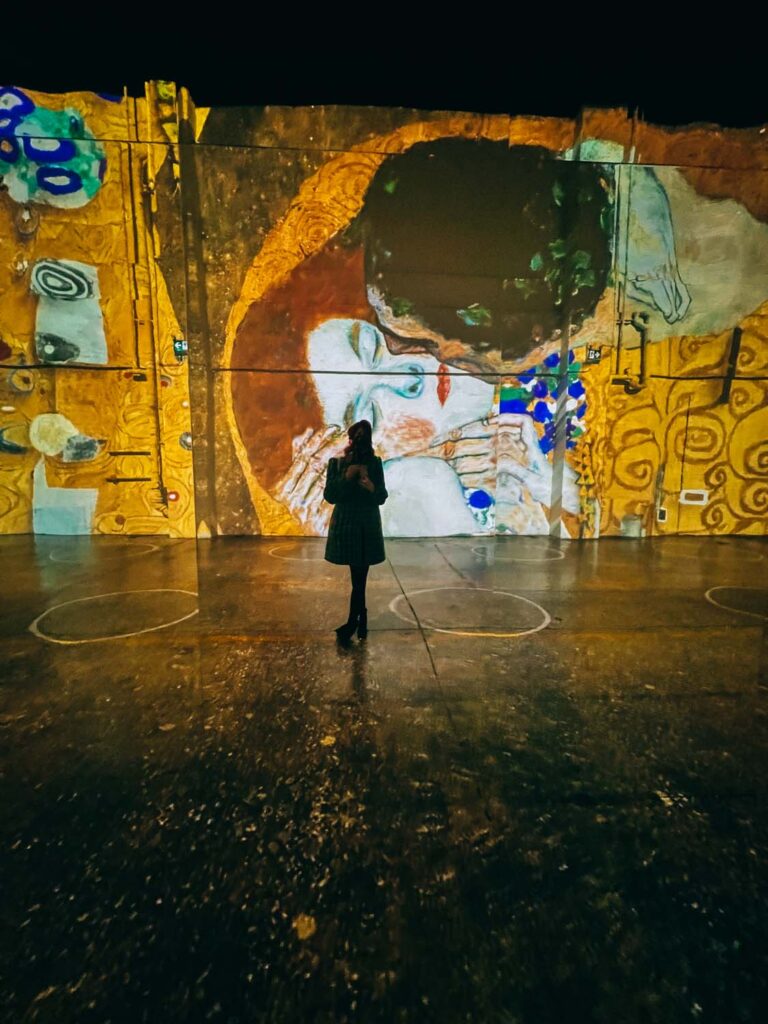
How Much are Tickets?
Depending on where you see the show, the ticket prices may vary slightly. Currently, the show is on in Toronto, but in 2022 it plans on touring the USA. Tickets vary in price depending on the time and day of the week. Weekends and evenings are $45-$55 CAD per adult. But on weekday afternoons, tickets are only $35. So plan accordingly to save a bit of money!
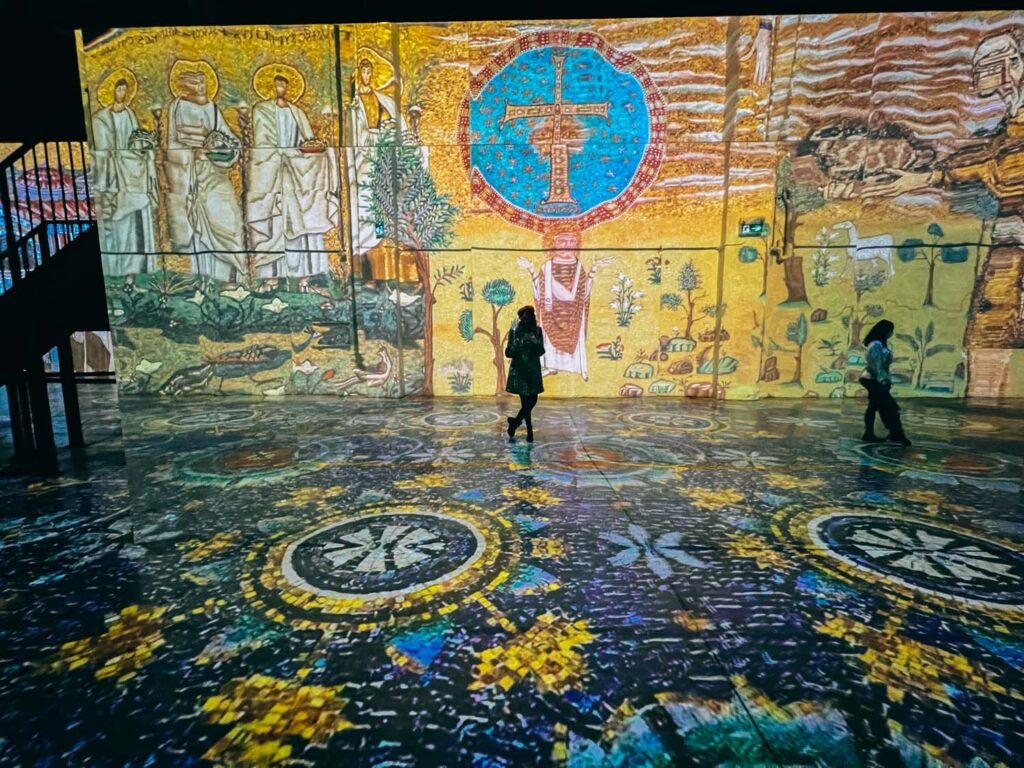
How Long is the Show
The entire show lasts 35 minutes and is put on a loop. You are free to stay for as many loops of the show as you like. I usually advise blocking off about an hour to experience the show from different angles. It’s worth just sitting through the entire loop in one spot to take it all in. Then, for the second showing, walk around a bit. This way, you can see how the animations and projections change depending on your standing in the room.
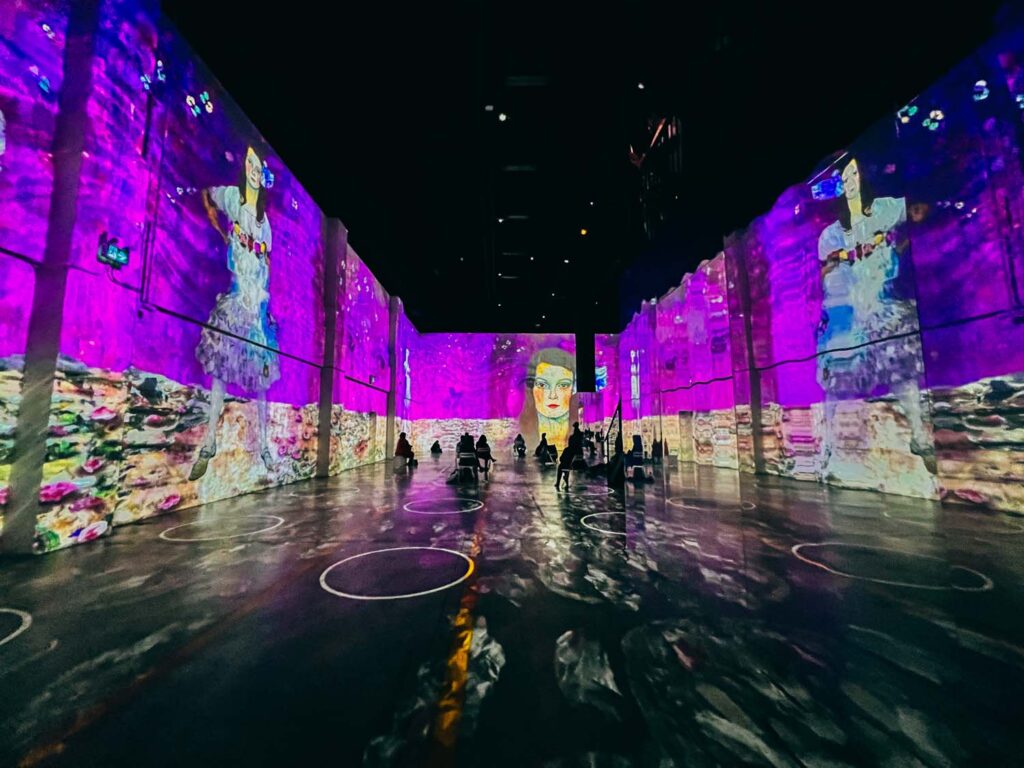
Review of Immersive Klimt
Klimt went through so many different periods of his painting, and to see them all laid out together is an amazingly transformative experience. Over the years, Klimt’s popularity has become almost commercial. His paintings have graced dorm rooms as posters all over the world. His golden patterns find their way onto clothing and accessories. This mainstream accessibility is so surprising because during his lifetime he was deemed extremely controversial.
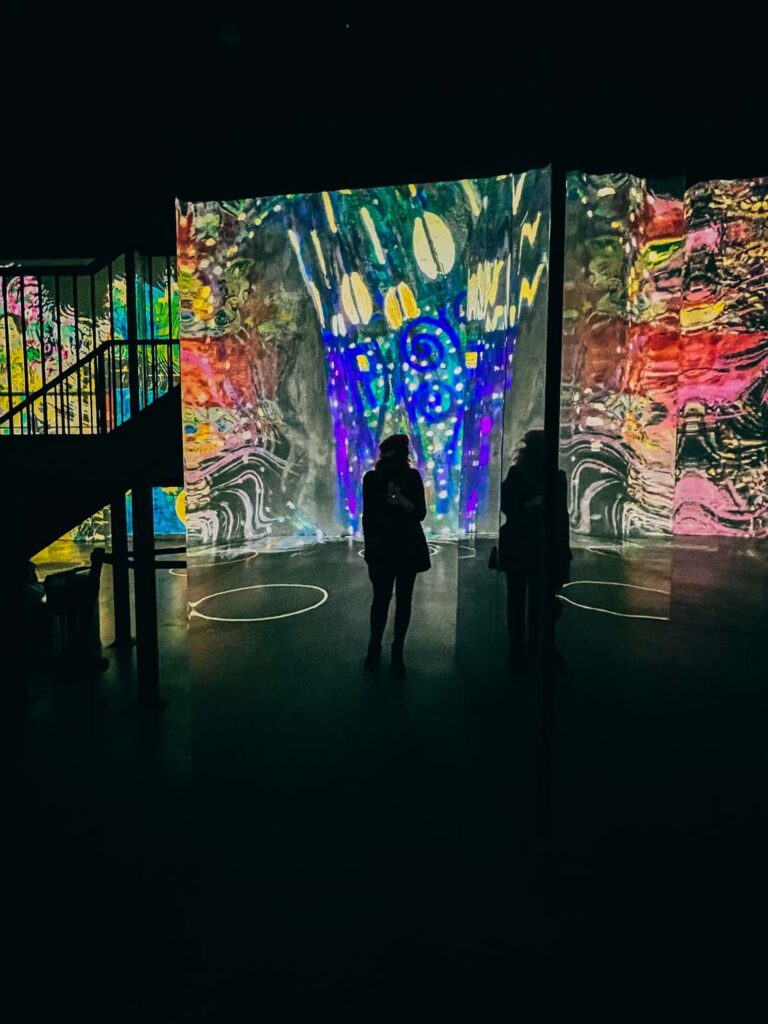
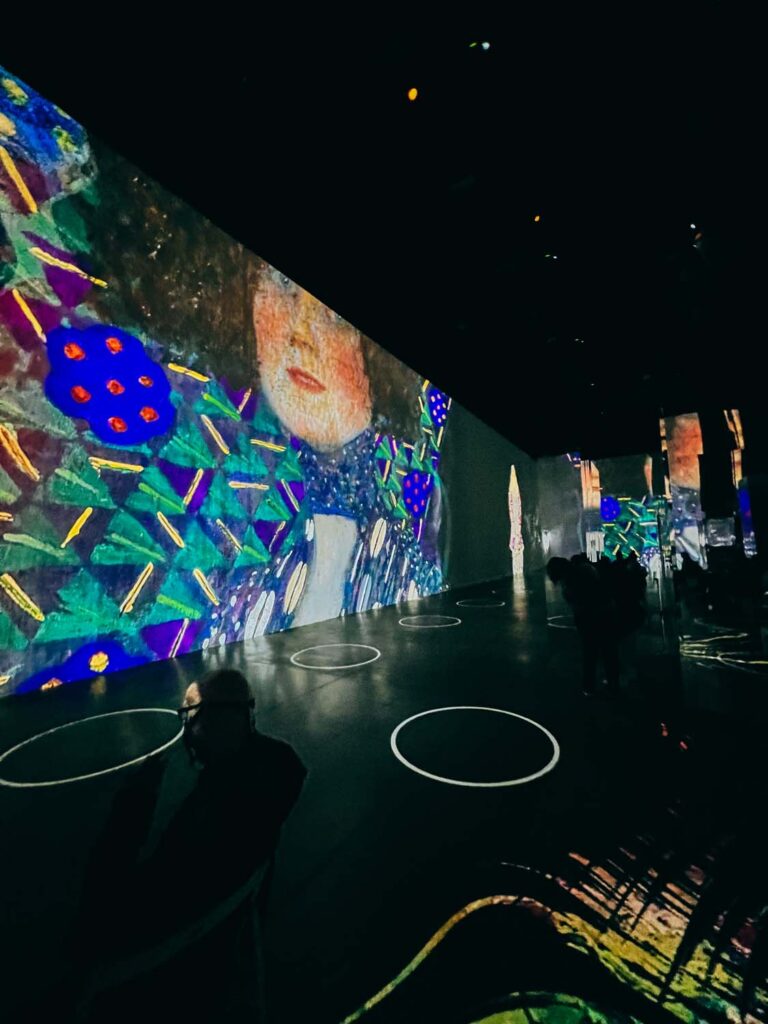
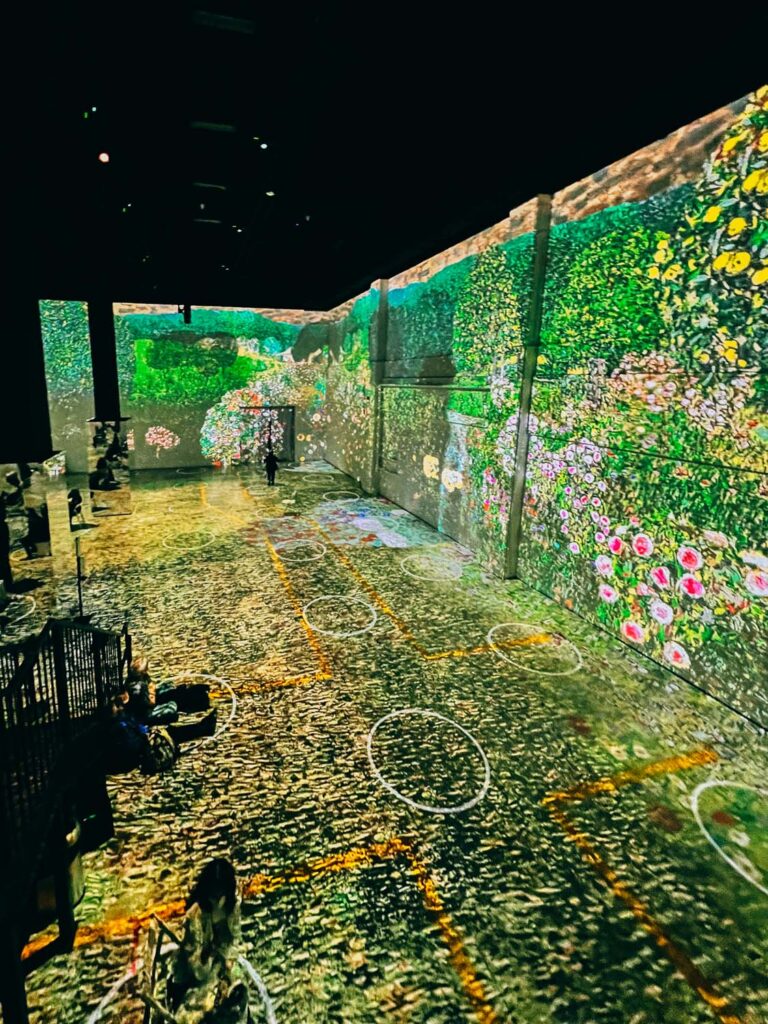
In 2020, the team behind Immersive Van Gogh created their newest exhibition, Immersive Klimt. Lighthouse Immersive describes the period in which Klimt was working as an artist as “the height of the artistic revolution in Vienna that preceded the fall of an empire: pulsing with bombastic energy and the collision of the traditional and the modern.”
That energy can be felt throughout the show. Unlike the other artists who have had immersive exhibitions based on their works (Van Gogh and Monet), Klimt’s work is imaginative, abstract and almost vibrating with passion. If you’ve never seen an immersive show before, the exhibition uses scans of the works of a certain artist and, using digital technology, animates and blends them together. These are then projected onto the walls of these wide-open spaces. While some people insultingly refer to these as nothing more than screensavers, I think it is an amazing opportunity to experience works of art together as one show that would never otherwise be able to be seen together. Either because they are spread out all over the world or some painting might even be held in private collections.
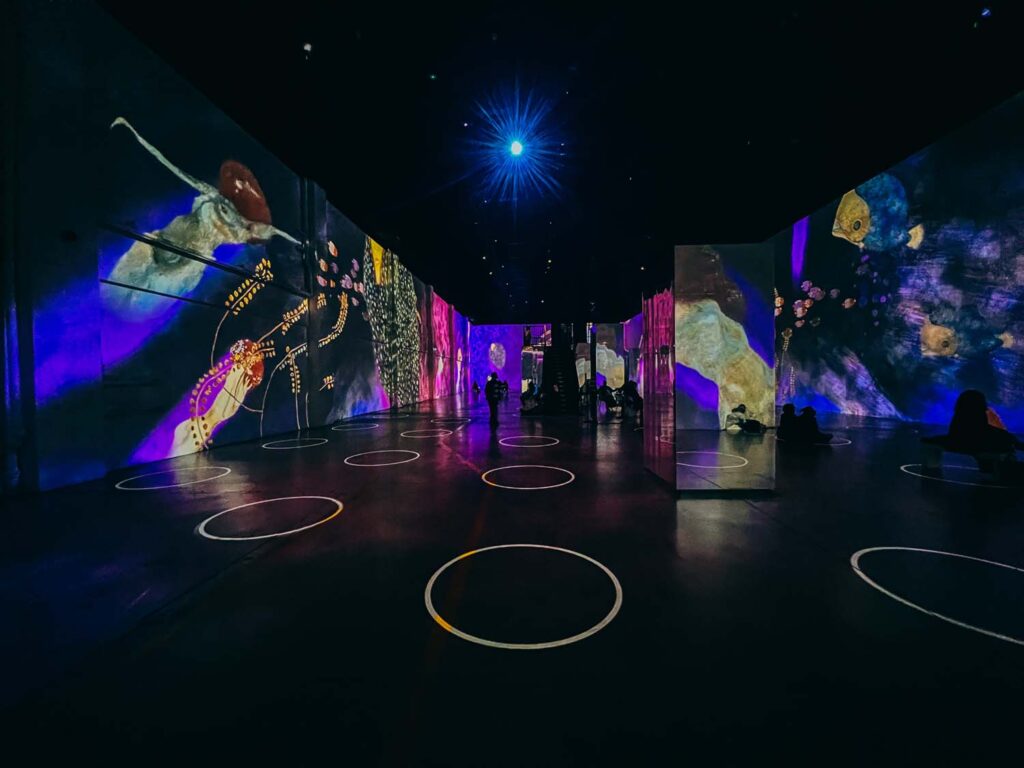
Immersive Klimt Animations
I found this show to be the most experimental in the animations the team uses to project Klimt’s work onto the exhibition space walls. At times it was suuuper trippy, and I heard more than one person mention that it made them feel like they were on drugs. The flashing lights at times felt like you were at a rave. I couldn’t help but feel this was how a contemporary audience could feel the same shock and awe that early 20th century audiences felt when they saw Klimt’s revolutionary work for the first time.
The penultimate painting, the Kiss, was projected along with videos of contemporary dancers. The dancers were nude, just as many of Klimt’s models, and danced to the sound of the music playing all around you. The group I went with were torn on this modern addition. But personally, I loved seeing it. It felt like real-life passion that the works of Klimt’s are trying to project.

Is It Worth It?
Immersive Klimt was the most fun of all the productions I have seen. The team behind the exhibit really seemed to let their imagination run wild. But like with all of these immersive shows, it lacks context. This one especially had almost no contextual information upon entering. Plus, throughout the show, they also project artworks by Egon Schiele, Koloman Moser and images from Ravenna Cathedral. It’s important to understand these aren’t part of Klimt’s oeuvre. The show does a great job of presenting a variety of Klimt’s artworks from the various periods of his life but just doesn’t do justice to the stories behind these paintings.
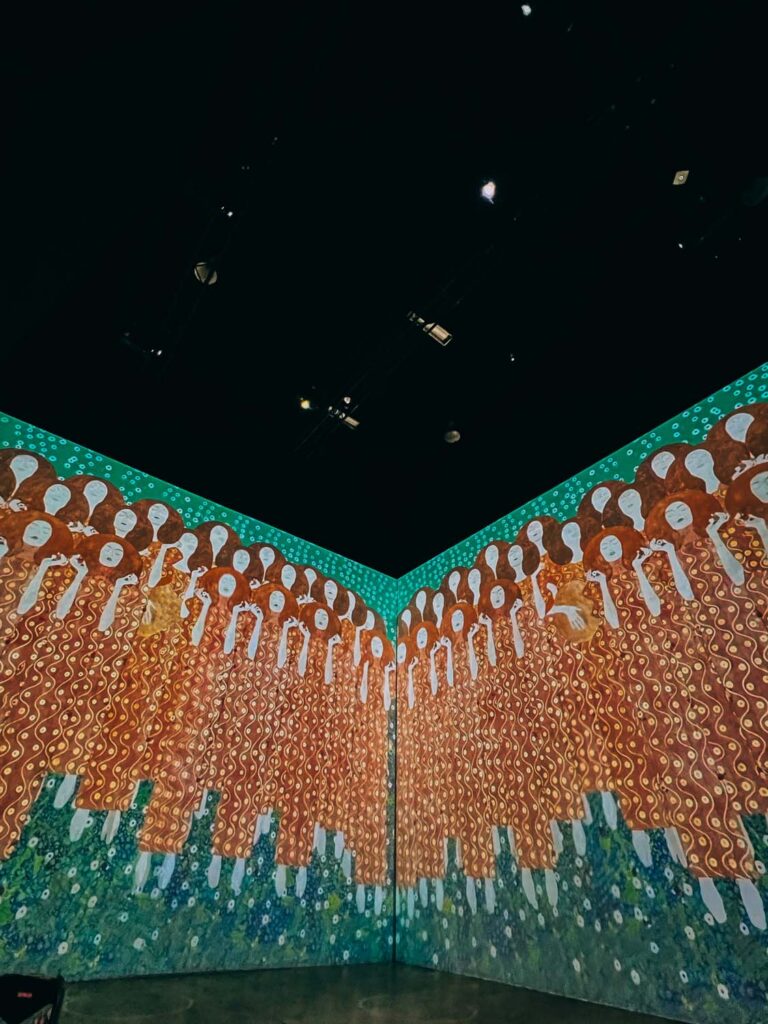
Klimt himself is such a compelling character whose life impacted and affected his works so much. Hopefully, this blog will act as a primer to your visit to the Immersive Klimt Experience and allow you to better understand the moving nature of these transcendent works of art.
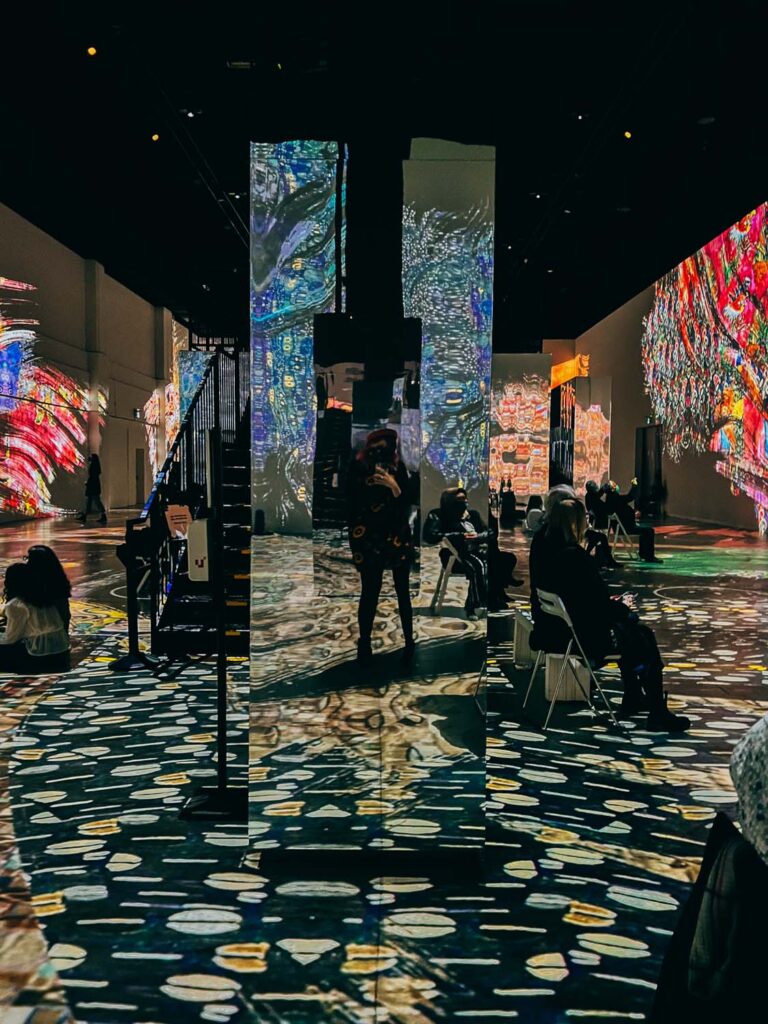
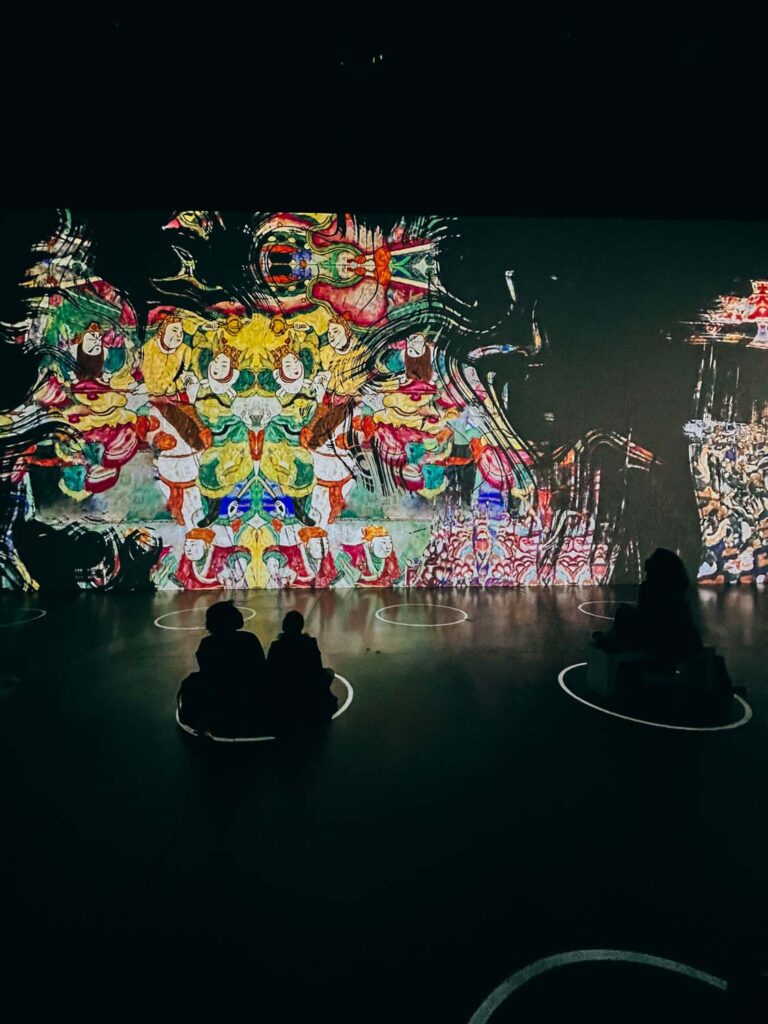
The Life and Art of Gustav Klimt
Klimt’s Young Life
Gustav Klimt was born in 1862 in a small suburb of Baumgarten, southwest of Vienna. His father was Ernst Klimt, a gold engraver, and his mother, Anna, was an aspiring musical performer. Their household was filled with creative energy, and no doubt, Klimt was influenced by this from the day he was born. But the family of seven children was desperately poor. Their poverty constantly resulted in them having to move to search out cheaper housing. One of Gustav’s sisters died in 1874, and soon after, another of his siblings was sent to a sanitorium. After succumbing to religious fervour. The lack of medical treatment available to this impoverished family no doubt impacted their day-to-day lives.
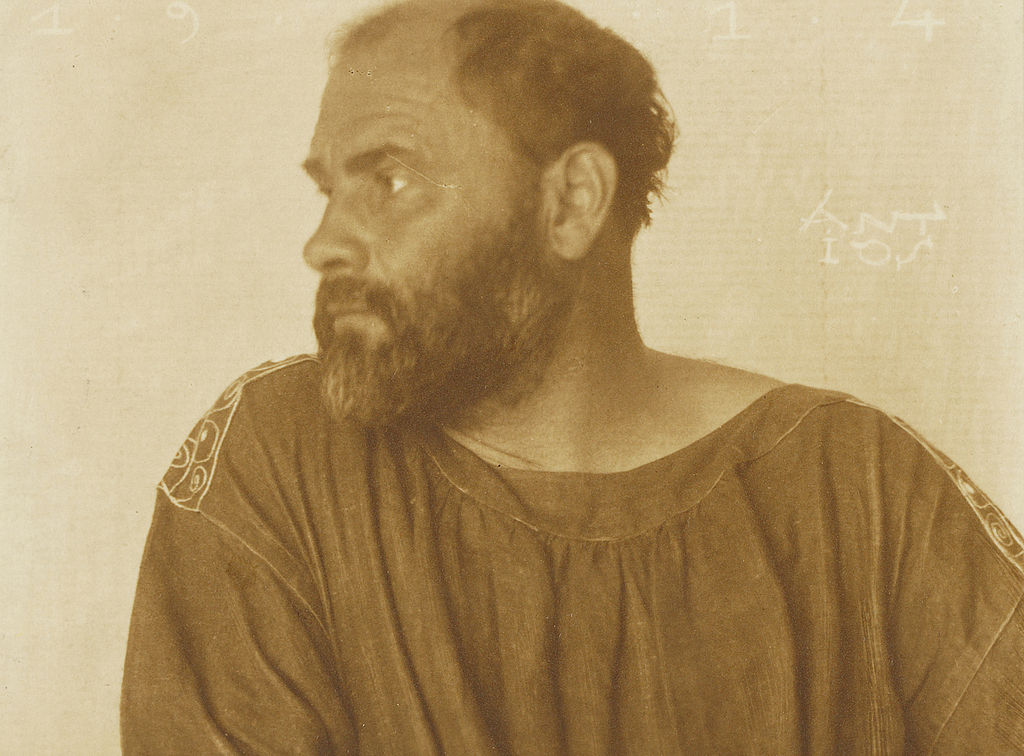
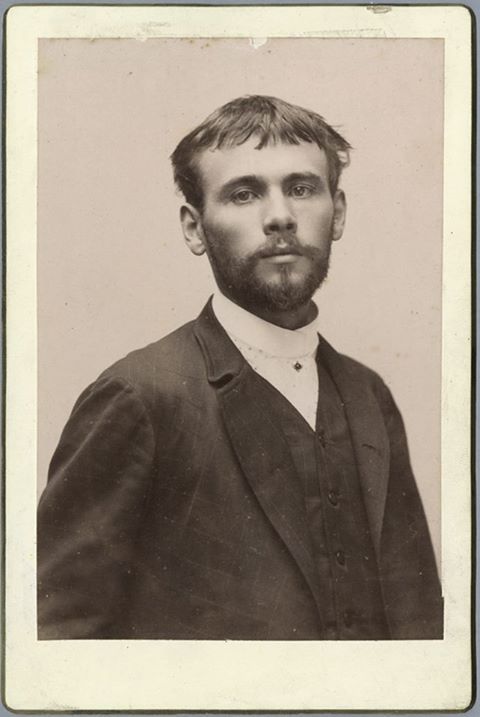
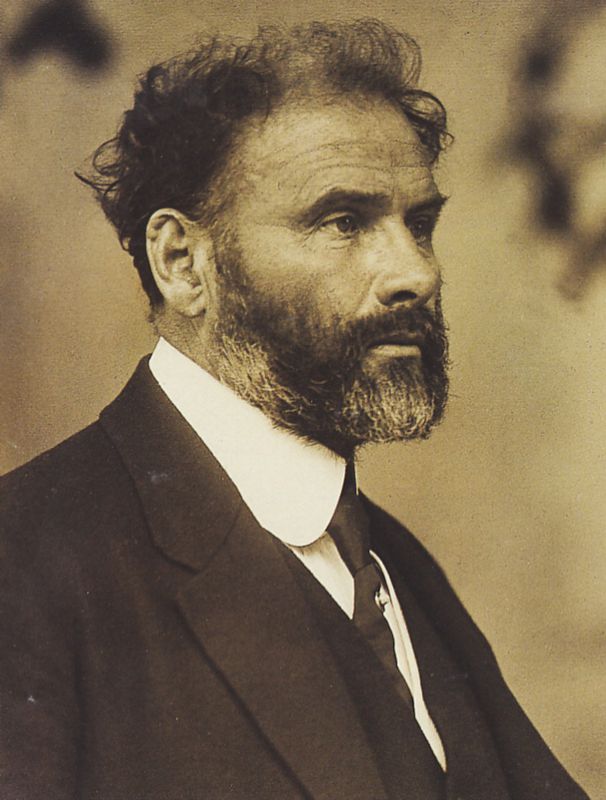
Viennese School of Arts and Crafts
Despite all this, Ernst saw Gustav’s talent, as did his teachers. His father wanted to see Gustav succeed and escape the poverty his family was trapped in. So, in 1876 Gustav applied to enroll in the Viennese School of Arts and Crafts. He was only fourteen years old. And yet, he was a prodigy with skills far beyond his young age.
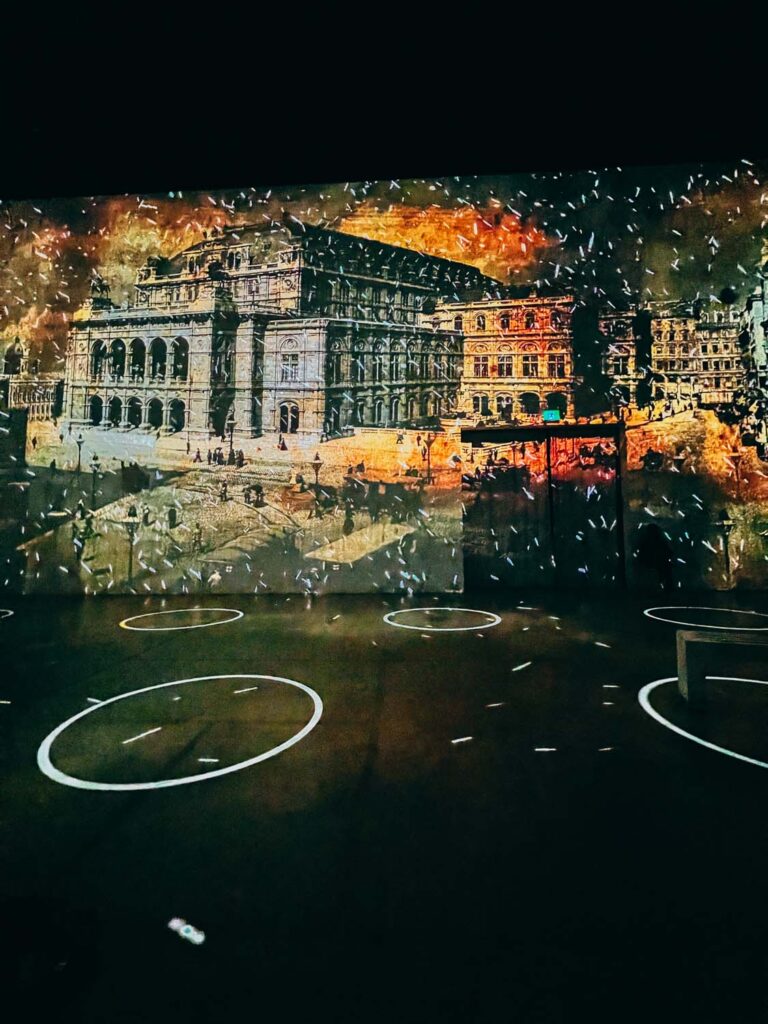
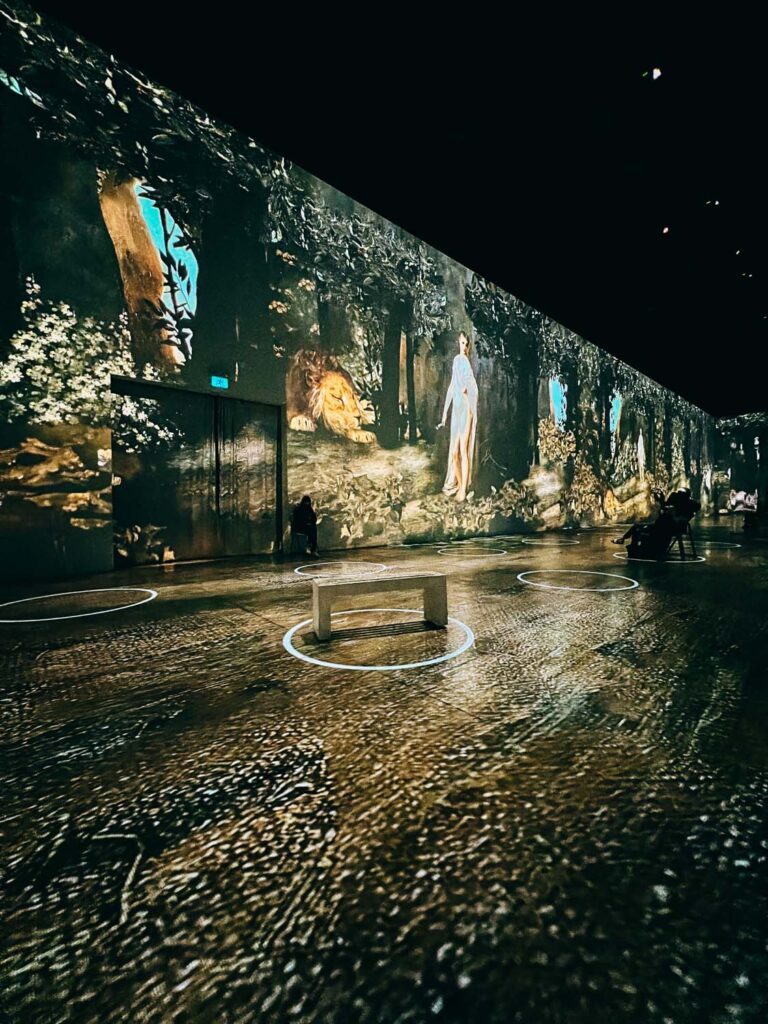
At school, he learned all the classical painting techniques. But they also taught their students how to work in other mediums. He also learned how to create mosaics, work with metals, and even mix paints. All of which he would incorporate into this artwork later in life. Gustav’s love of folklore, mythology, and Slavic history would be ignited in school. A theme that spread like wildfire throughout his artwork.
The Ringstrasse
Klimt had his first chance at practical experience working in the creation of the artistry of the Ringstrasse. In 1858, Emperor Franz Joseph wanted to destroy all the old medieval defensive walls around the city. With this new space, he wanted to create a new, vibrant outer ring of buildings that represented the new Vienna. He called this part of town the Ringstrasse (“ring street”) encircled the city. This was Vienna’s “Golden Age.” The Ringstrasse is the most popular loop for tourists to see all the best Viennese architecture even if you visit Vienna today.
The Golden Age of Vienna
During the Golden Age, research, science, and industry were all driven by modern advancements. And yet, the one aspect of culture which had yet to be redefined was art. And that was where Klimt saw his opportunity. Klimt and his brother Ernst started up a small painting business, and their first commission was to paint the grand stairway of the new Burgtheater. Klimt called the paintings in series the “Allegories and Emblems.”
Despite this being a hugely prestigious commission, the pay was dismal and wouldn’t even cover the price of models. So Klimt had to get friends and family to pose for the murals. Today, this is such a historical treat as we can still see Klimt’s sisters Hermine and Johanna’s faces set among the spectators in Shakespeare’s theatre. And Klimt’s brother Georg is even portrayed as the dying Romeo. Hidden in the audience is also the only surviving self-portrait of Gustav. Klimt never painted a self portrait so this is the only version of himself he ever made.
University of Vienna’s Great Hall
Despite the massive success of the Grand Staircases of the Vienna Burgtheater, Klimt was about to suffer one of the most significant blows of his life. In quick successions, both Klimt’s beloved father and brother suddenly died. Klimt suddenly was charged with financially taking care of his family. It was perhaps this onset of responsibility that drove him to become a successful artist. He poured all of his grief into his art, like many great artists before him.
The first large commission he took after the death of his family members was at the University of Vienna’s Great Hall. But Klimt wasn’t going into this commission like the others he had done. Based on the classical compositions and techniques he learned in school. His grief has sent him spiralling to find a new form of painting. He began employing a radical style filled with decorative symbolism.
Philosophy, Jurisprudence and Medicine
The images he was set to paint were supposed to represent Philosophy, Jurisprudence and Medicine. Yet, the university has difficulty reading any of his paintings expressing these subjects. Klimt’s grief and the loss left him jaded. In his depiction of Philosophy, he painted the great thinkers as just people who could not save man from despair. Jurisprudence only justifies violence and leaves the innocent vulnerable.
Most importantly, Medicine could not save us from death. In addition to these controversial scenes, the women he portrayed in the scenes were all nude. The Medicine mural was deemed highly scandalous. The critics even referred to it as “pornographic.” The university sent these paintings to exhibitions in Paris to get more opinions before they were to have them installed. At the show, the judges were blown away by the decorative symbolism.
Despite winning the gold medal at the art exhibition, the university refused the paintings. Klimt was enraged. Klimt kept the images for himself and later displayed them in Vienna’s Museum of Modern Art. Sadly, the pictures were all lost in a great fire in 1945. The Nazis burnt many paintings they deemed too radical, and Klimt sadly fit right into that group. Today we have a few pictures of the works of art along with some aspects of the painting he incorporated into future paintings.
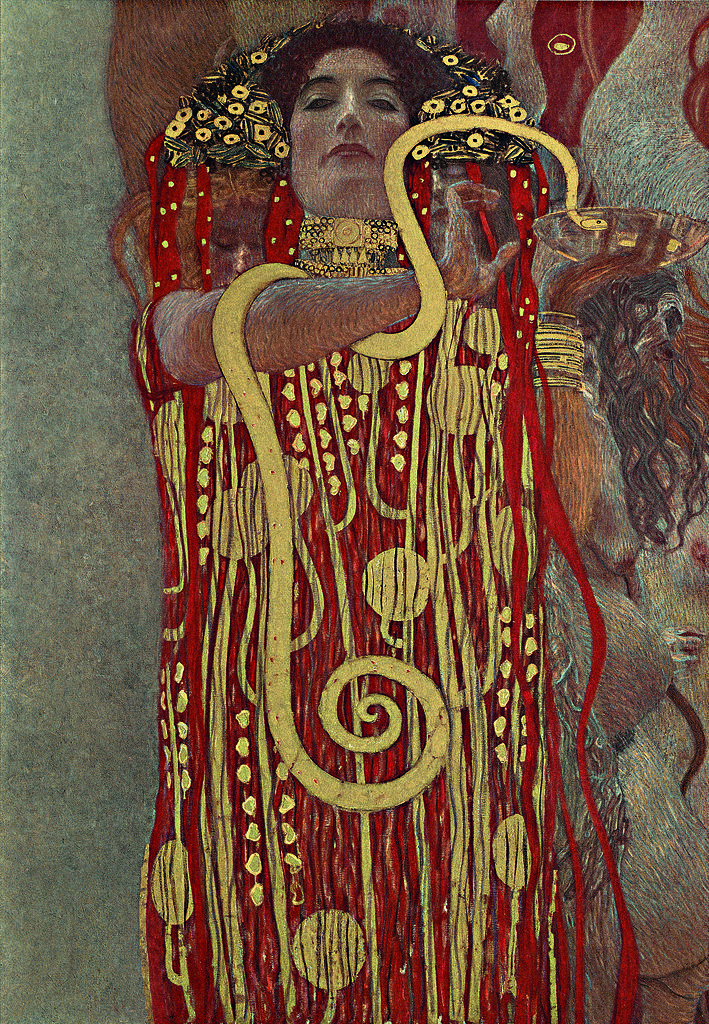
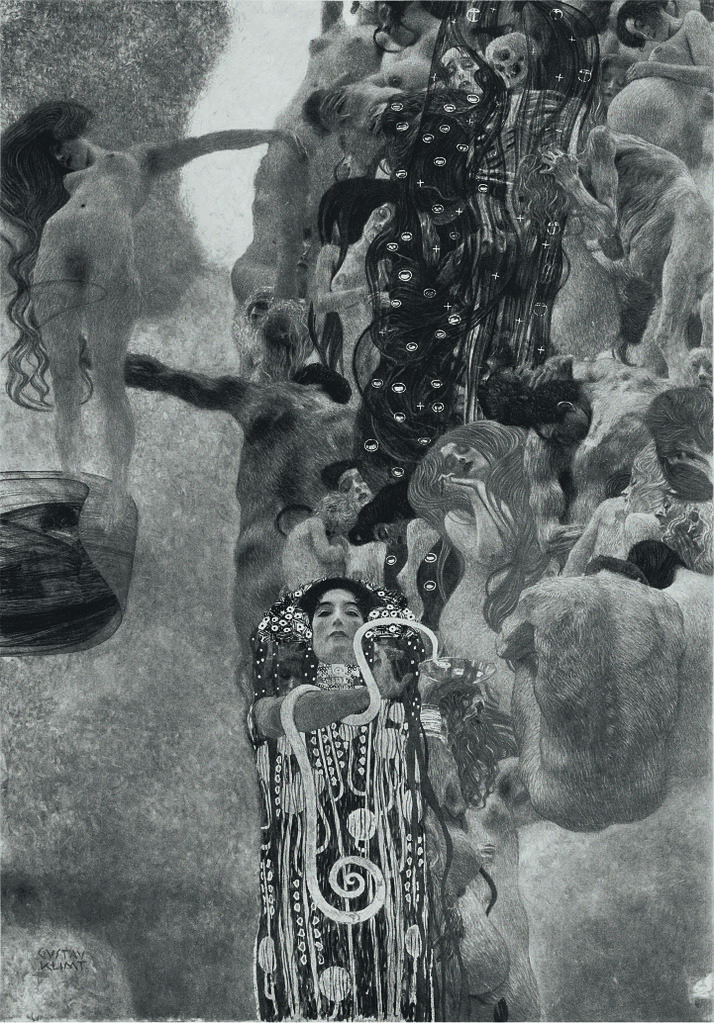
Founding the Vienna Secession
After the disappointment at the University, Klimt began to seek out other like-minded artists. Through this search, he left the Kunstlerhaus, Vienna’s association of artists. Leaving the group was a big deal. It was only through this association that most artists got their big commissions. But Klimt knew they preferred the more conservative work and wasn’t interested in bending to that style of work.
Instead, in 1897 he founded his own artist community, which he called the Wiener Sezession (Vienna Secession.) The Secession movement was the Austrian interpretation of Art Nouveau that sweeping other parts of Europe. Although there was no strict manifesto, as Klimt wanted to encourage all the artists to be as expressive and unique as possible, the art seemed to reflect naturalism, realism and symbolism.
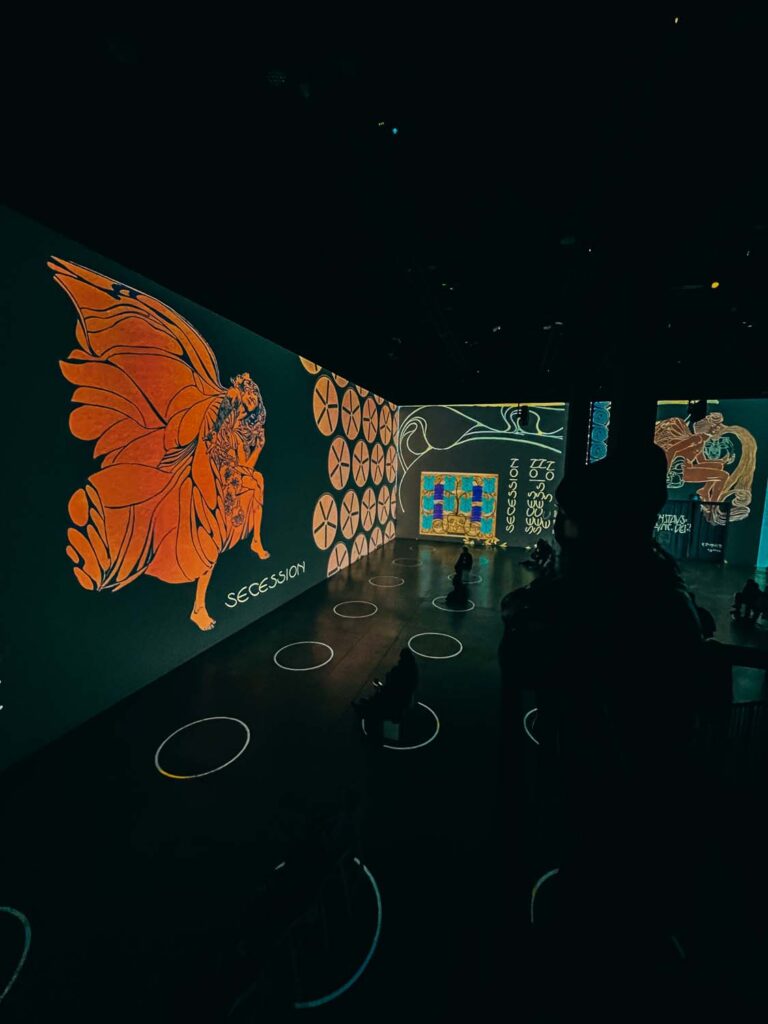
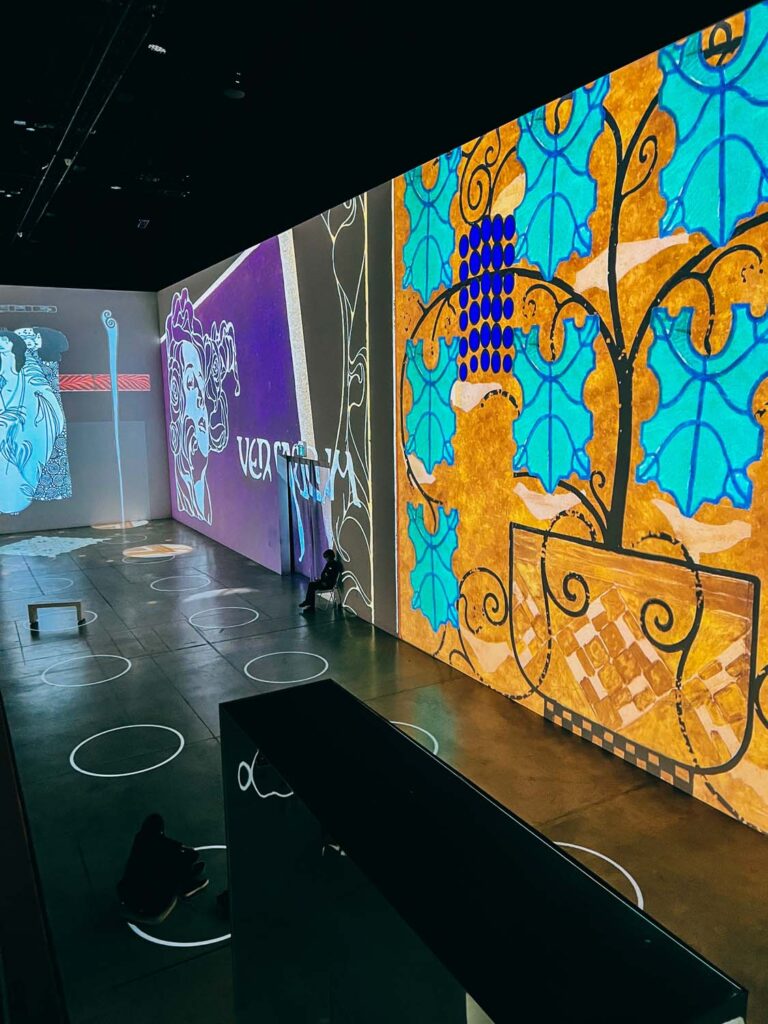
Nuda Veritas
The Secession group included famed architect Josef Hoffmann, designer Koloman Moser, designer and architect Joseph Maria Olbrich, painters Max Kurzweil, and Art Nouveau prodigy Alphonse Mucha. The first real painting of Klimt that was at the forefront of the Secession movement was Nuda Veritas in 1899. The painting depicts a beautiful naked woman with flaming red hair. In her hand, she holds the mirror of truth towards the viewer. At the top of the frame is a quote by Friedrich Schiller in stylized lettering: “If you cannot please everyone with your deeds and your art, please only a few. To please many is bad.”
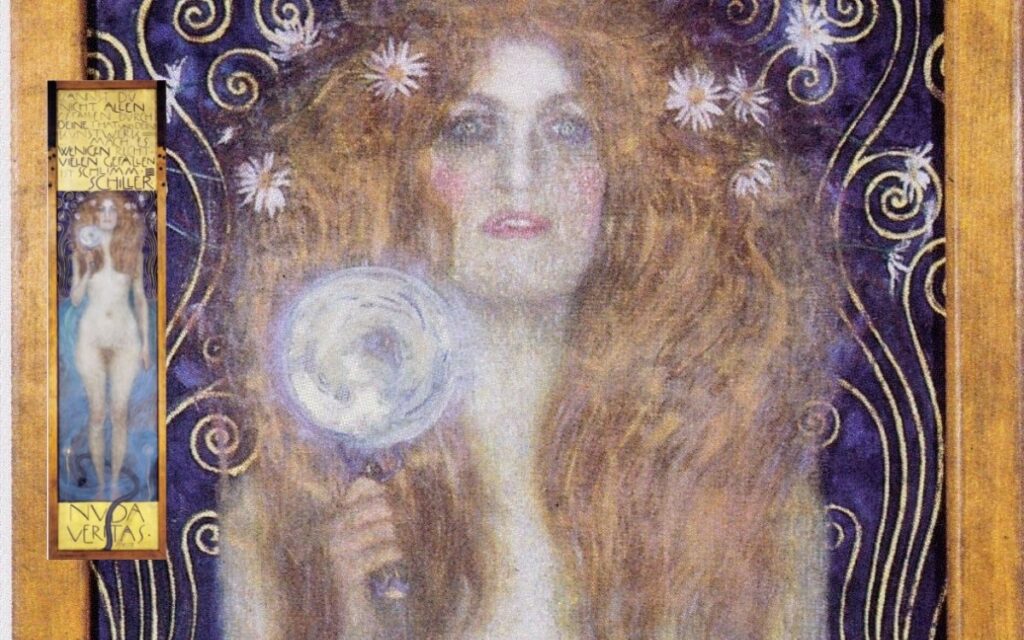
Emilie Louise Flöge
During the founding of the Vienna Secession, Klimt also started a lifelong partnership with Emilie Louise Flöge. Emilie’s sister Helene had been married to Gustav’s brother Ernst. When Ernst died, Gustav became Helene’s legal guardian and spent a lot of time with the entire Flöge family. Emilie and Gustav became constant companions but they never married. Their alternative romance was a shock to Viennese society. Still, it seemed in the same vein as everything else in Klimt’s life. Despite their atypical relationship, Klimt was known to use her as a model. She is immortalized in many of his most famous paintings.
It’s important to note that Emilie was an incredible fashion designer, and she had a very successful Viennese fashion house. She was not the typical muse who faded into the background, more than a pretty face. She was fiercely creative in her own right, and her fashions were miles ahead of their time! Much like the fashion revolution we are seeing today, her styles moved away from the male gaze. Her designs were also made in the spirit of freedom. She wanted to break away from the tight corsets and give these modern freethinking women dresses that were loose and yet also emphasized their femininity.
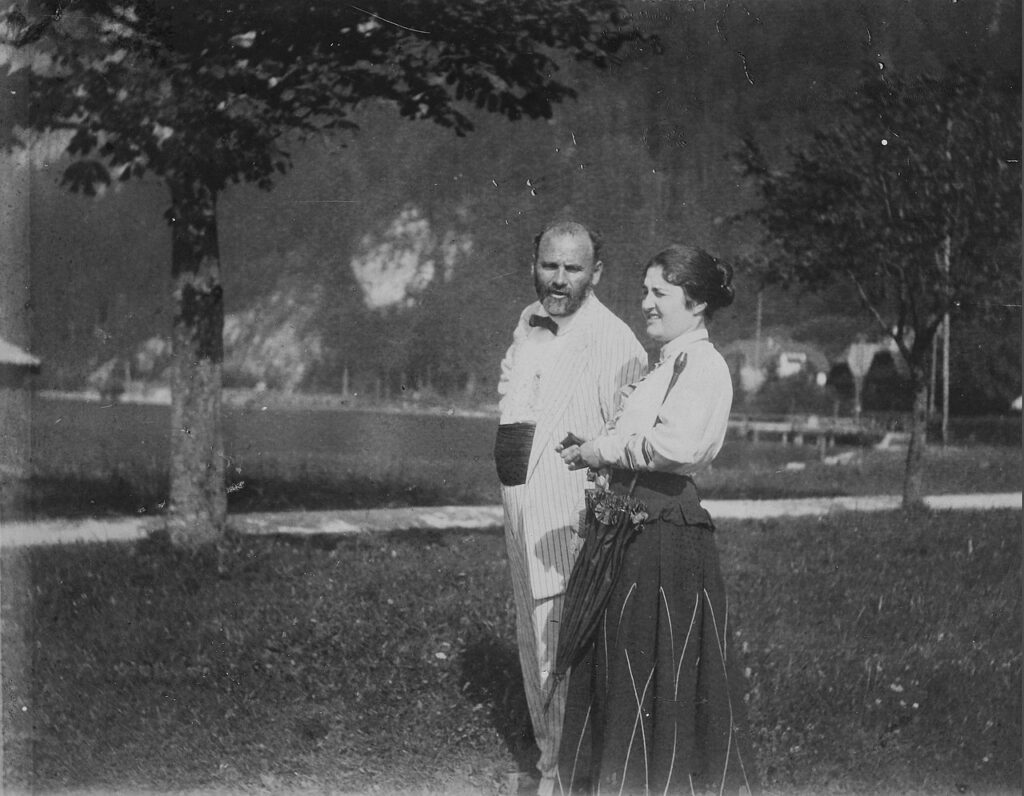
Mermaids and Serpents
The other reason that Emilie and Klimt were never married was perhaps that Klimt was somewhat of a Viennese Casanova. Undoubtedly, he was somewhat of a misogynist and was obsessed with the human form. As well as his desire for the women he painted. Given the freedom of expression from the Secession movement, Klimt drew hundreds of erotic drawings in the 1900s. These expressive, sensual, and dynamic forms would go onto become the basis for his famous Mermaids and Serpents.
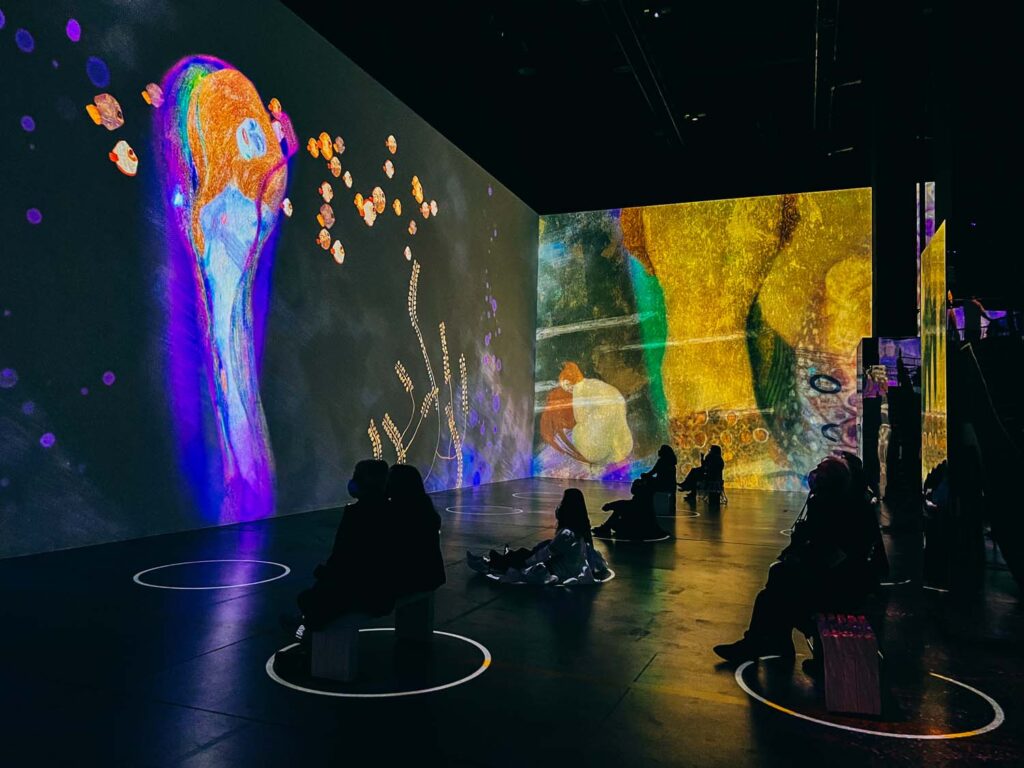
I loved how the Mermaids were represented in Immersive Klimt. Swimming around the space, giving real movement to their sensual and fluid forms. It’s very interesting to note that the design of the women’s bodies is stretched and feature a bulbous head. Creating the effect of a phallic-like shape. The integration of male and female forms as one singular creature.
Another signature style of Klimt’s paintings was his women with long, large, red hair. The hair runs wild! It swirls around the women as if with a mind of its own. In early paintings of these mermaids, they are featured with men staring at them, both enraptured and horrific all at the same time. This gives the viewer a hint that perhaps these are not just any women, but in fact, more like Sirens. The Siren’s power is in their ability to capture and eat the men they seduce. While Klimt did his fair share of objectifying women he also was a man who saw the power of women.
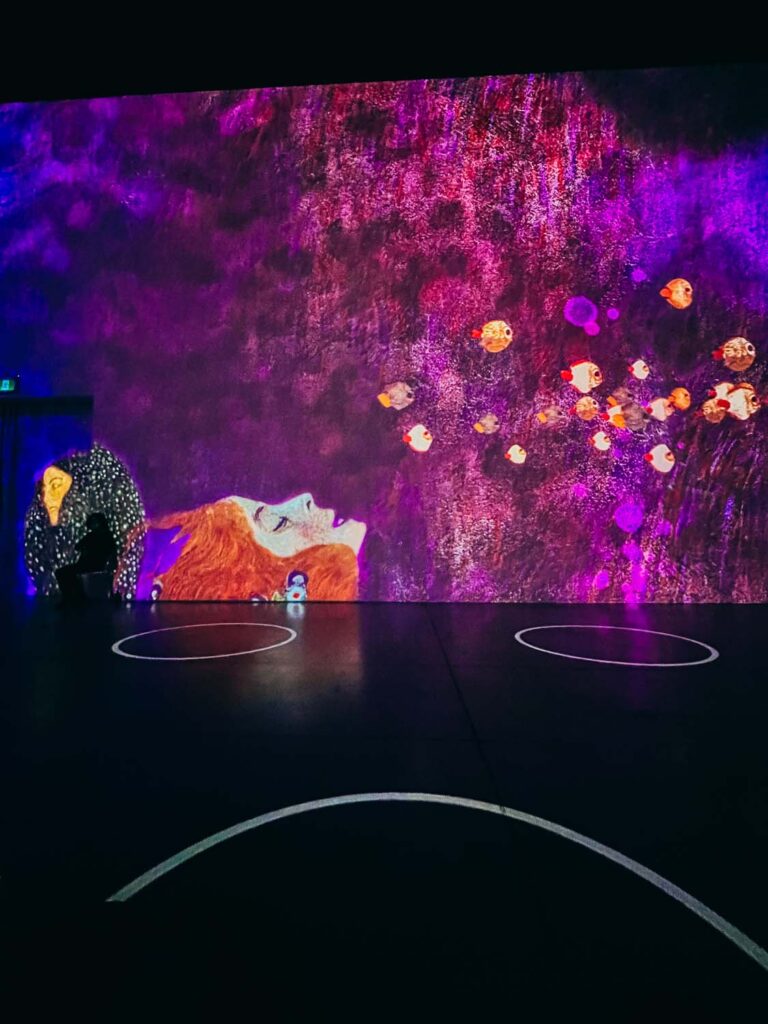
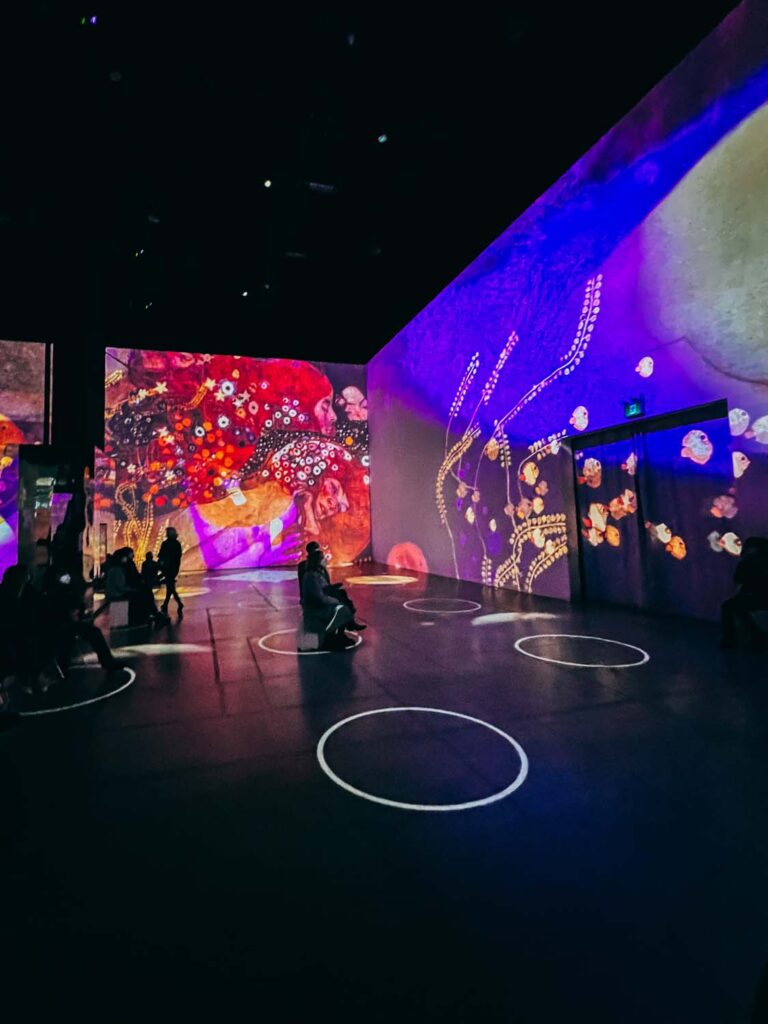
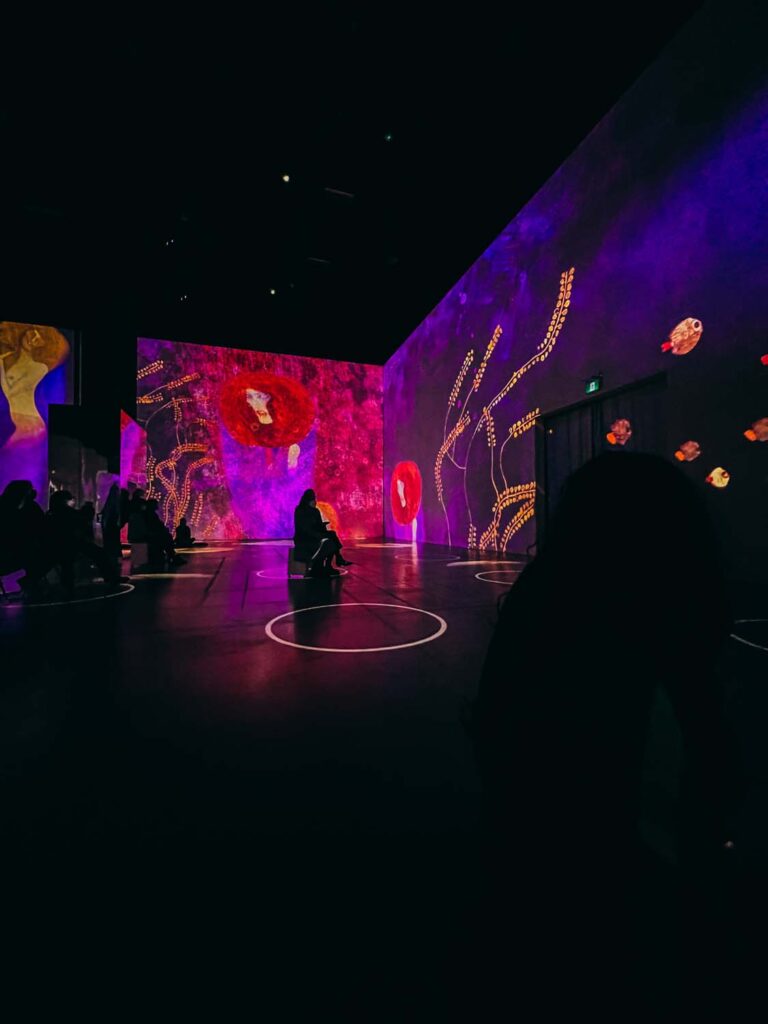
Water Serpents
In later paintings like Water Serpents I and Water Serpents II, the women are depicted in their own world. No men in their new kingdom. In fact, one of the pieces was very controversial as it was thought to depict two women as lovers. Klimt renamed the piece “Mermaids,” giving it a symbolic theme in fear that it would be censored. The fairytale context and fish-like bodies allowed him to represent this facet of society without being criticized. Later in his career, he would unabashedly represent lesbians without contextualizing them into myths. He wanted to paint them as they were. They became less abstract, the bodies unmanipulated. They were just simply The Women Friends, wrapped in an intimate embrace.

Judith and the Head of Holofernes
Women’s power over men was another theme that shocked society at the time. And yet, Klimt did not shy away from this. Klimt’s interpretation of Judith and the Head of Holofernes is a decisive example of his point of view. This scene is painted time and time again in art history and with many different interpretations. In most paintings of this scene we can see Judith in the process of cutting the head off, sometimes looking angry, violent, or even a bit repulsed. But usually, the man’s entire body can be seen, his horrified face sometimes more powerful than the expression on Judith. And yet, in Klimt’s, Judith’s body takes up almost the entire frame. She is the star.
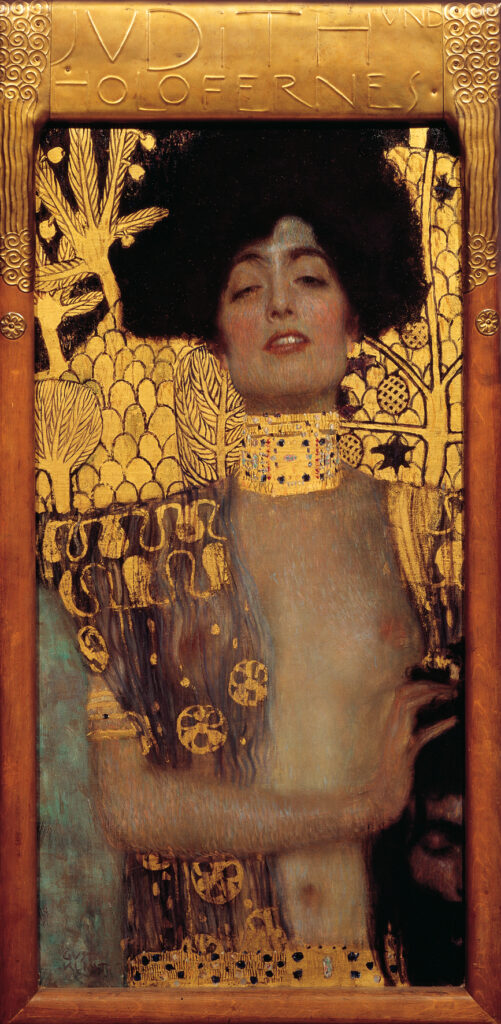
The head of Holofernes a literal side note, just peeking out from the corner of the frame. Judith’s expression is almost orgasmic as she reclines against the wall with her breasts exposed. She is seen taking pleasure in this act, something which Viennese society simply could not bring themselves to understand. Despite Judith being the one who cut off the head of Holofernes, she looks slightly decapitated. The large gold necklace around her neck blends into the gold background, making it look as if her head is almost floating about her body. Mimicking the act of the beheading.
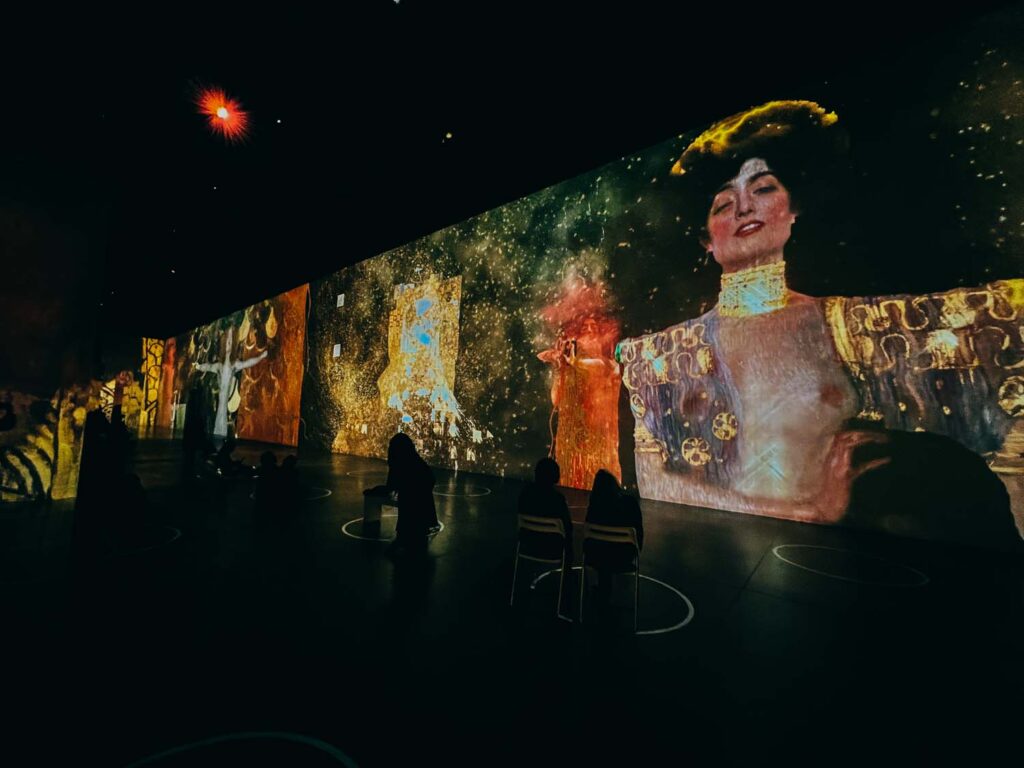
Beethoven Frieze 1901
In 1901, Klimt began work on a large frieze for the Fourteenth Vienna Secessionist exhibition. Although the piece was only intended to be displayed during the exhibition, it was painted directly onto the walls. The entire piece stands at 7-feet high and 112 feet wide.

It wraps around the rooms and begins with the image of a floating female Genii. Her form is repeated across this side to depict her flying around in search of Earth. The genii greet three golden figures. The largest figure in the foreground is a knight, wearing a shining set of golden armour. The knight is a symbol of hope, a saviour to humanity’s suffering.
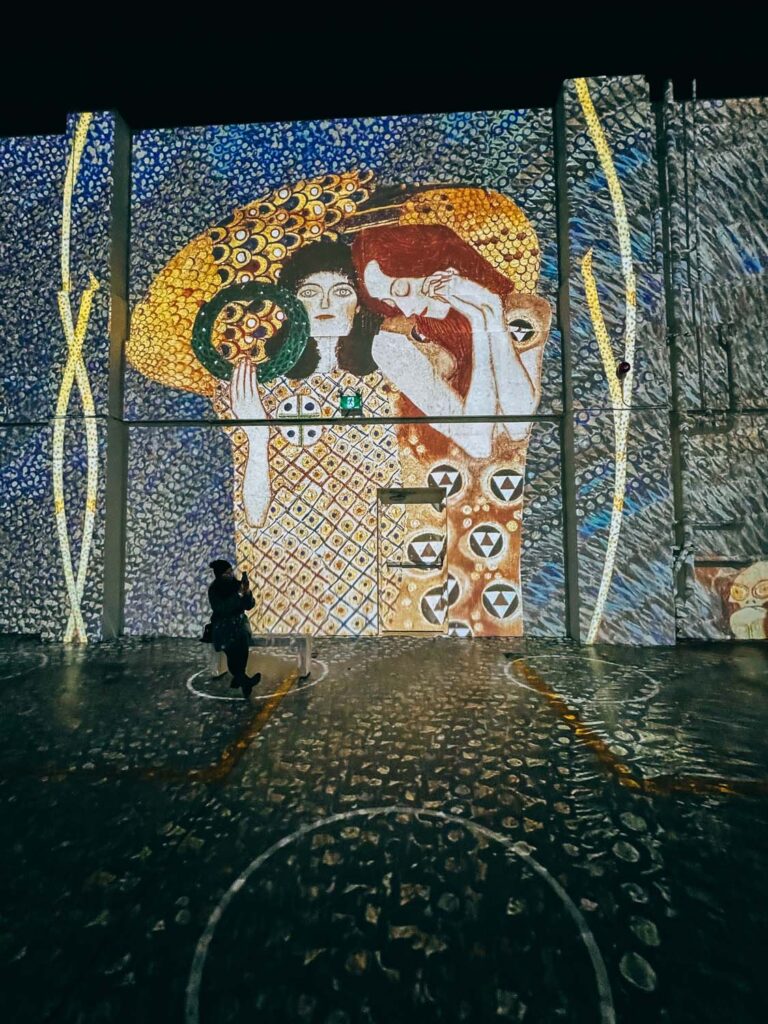
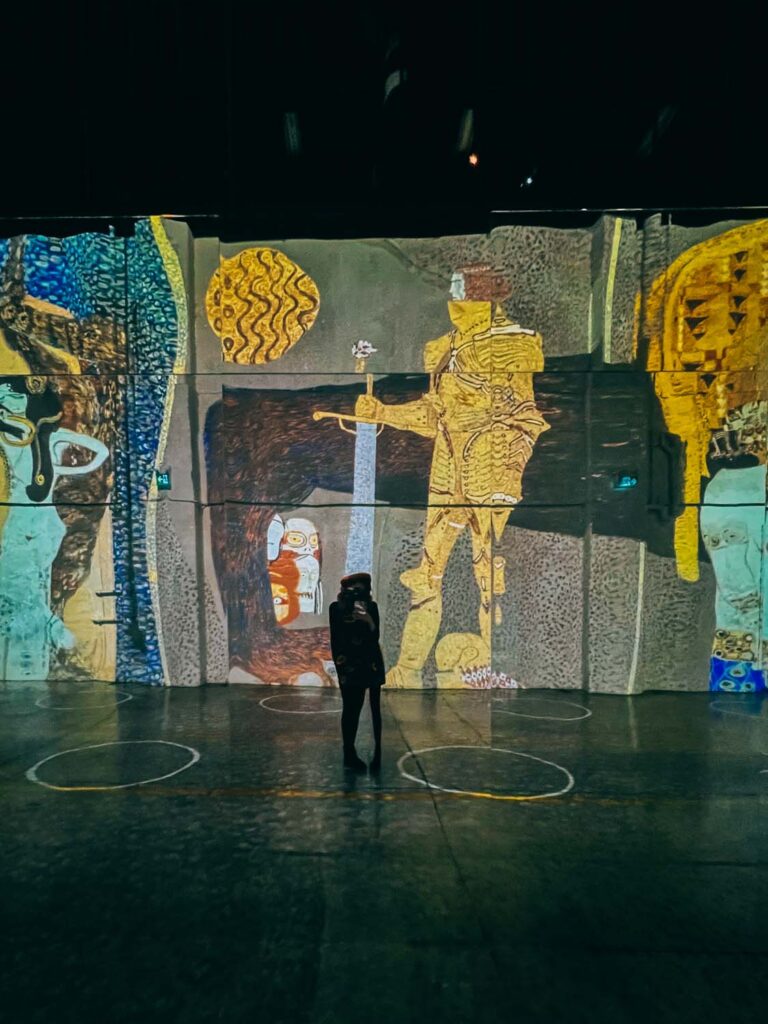
Typhoeus
In the most interesting part of the mural, the Genii meets the wind giant Typhoeus and his hostile forces. Typhoeus is a giant hairy creature with great wings that stretch across the entire wall. The creature’s giant snake-like tail curls under the wings and circles inwards like a spiral.
For Europeans of the time, the image of Typhoeus was especially impactful. Typhoeus was the personification of typhoid which plagued European cities, including Vienna, in the nineteenth century.

Typhoeus stands with his daughters, the three Gorgons, who symbolize lust, debauchery, and death. Their jet-black hair is encircled in golden snakes, just like the tail of their father. Their alluring bodies seem to temp viewers to come closer. They are the real sirens who lure men to their doom. Above the sirens are a series of ghoulish-looking women who seem to almost be decaying away in front of our eyes. These represent the faces of syphilis which was also running rampant through the streets of Vienna. Clearly, Klimt had a personal issue with all these diseases.
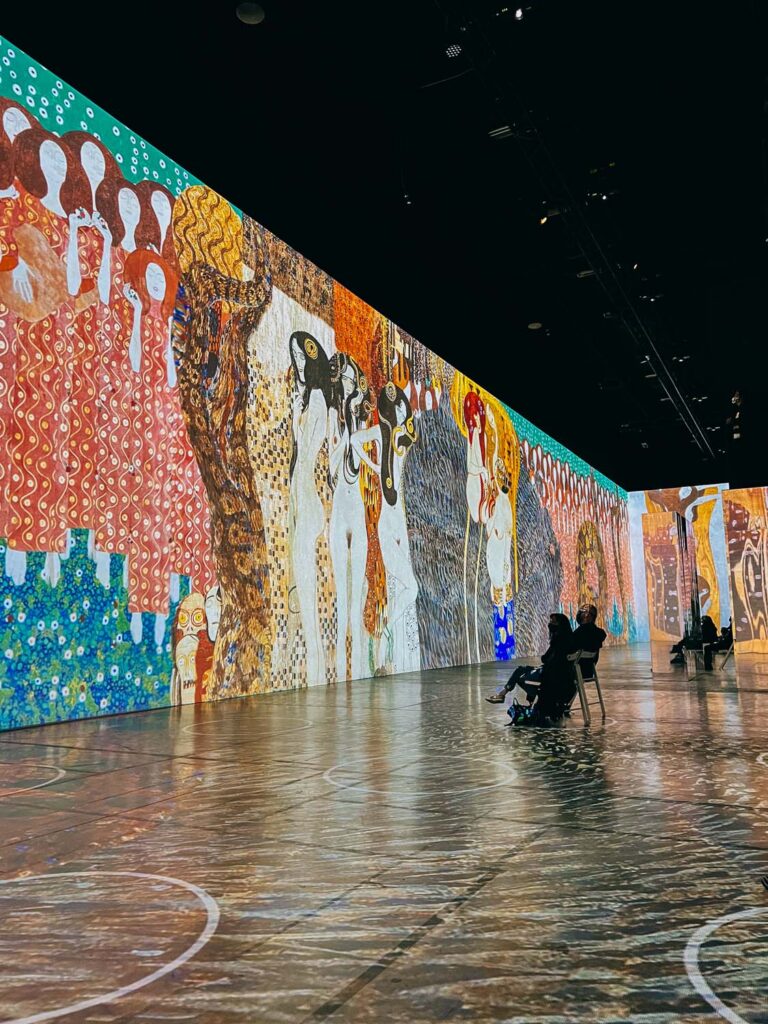
To the right of Typhoeus, a full-figured woman with sagging breasts represent Intemperance. She is excessive in all ways, in the wealth of her flashy jewelry, her ostentatious blue skirt and her obvious gluttony.
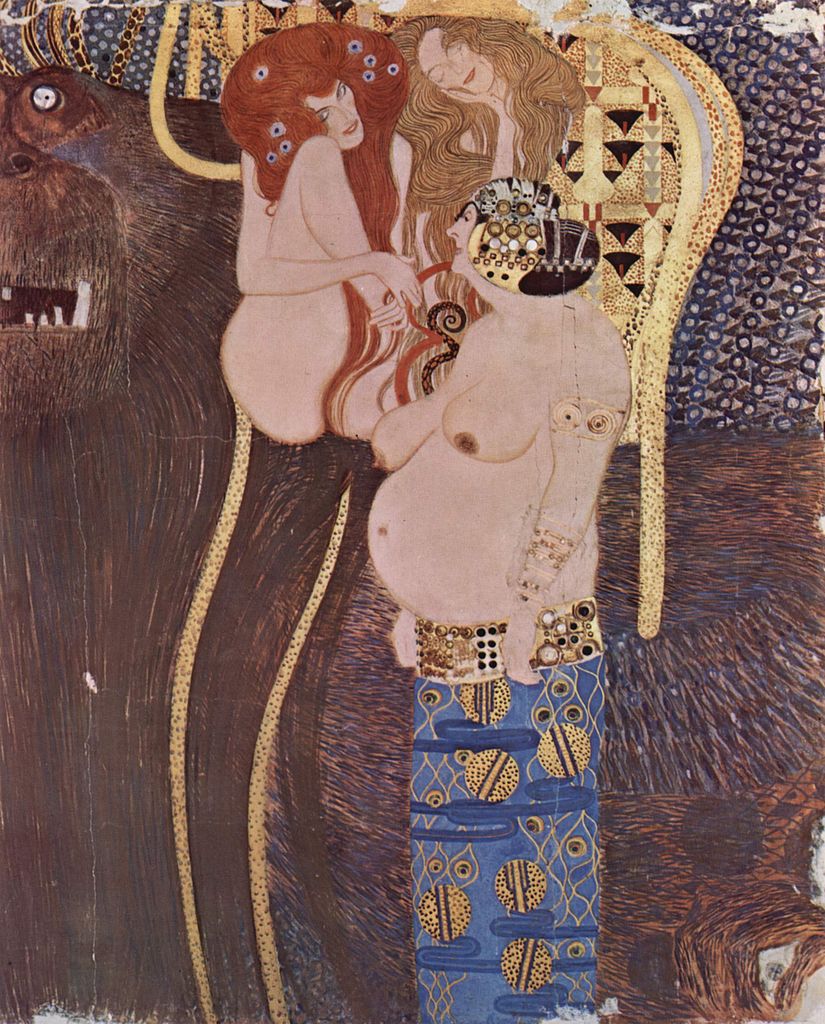
Love, Art and Music
But the Genii flies on in search of happiness. And she finds it, in a choir of angels. The singing represents the fact that we are led to an ideal realm of happiness and pure love through art. Music is truly heaven on earth.
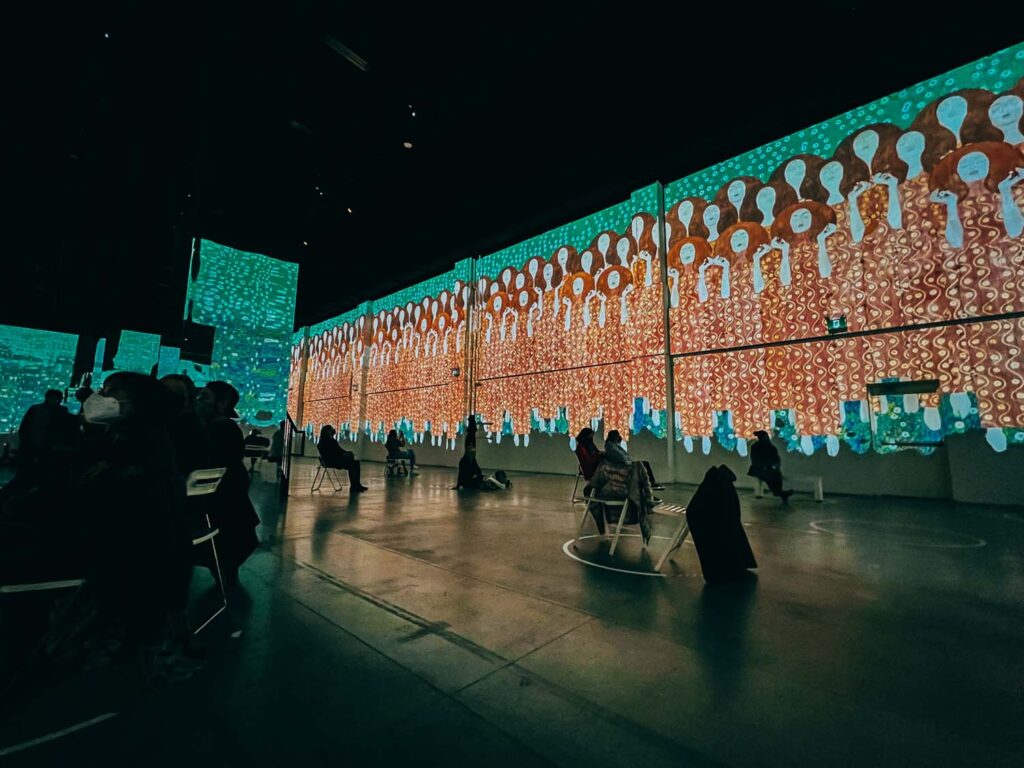
The scene ends with a kiss. All that constant yearning, and searching, finally comes to an end. The couple’s kiss is so passionate that the world around them seems to disappear, and they enter into their own reality. Behind them grows a tree. Perhaps reminiscent of the tree of life, which spread out from the earth into the heavens. The lover’s feet are bound together as if it represents the sturdy trunk of the tree.
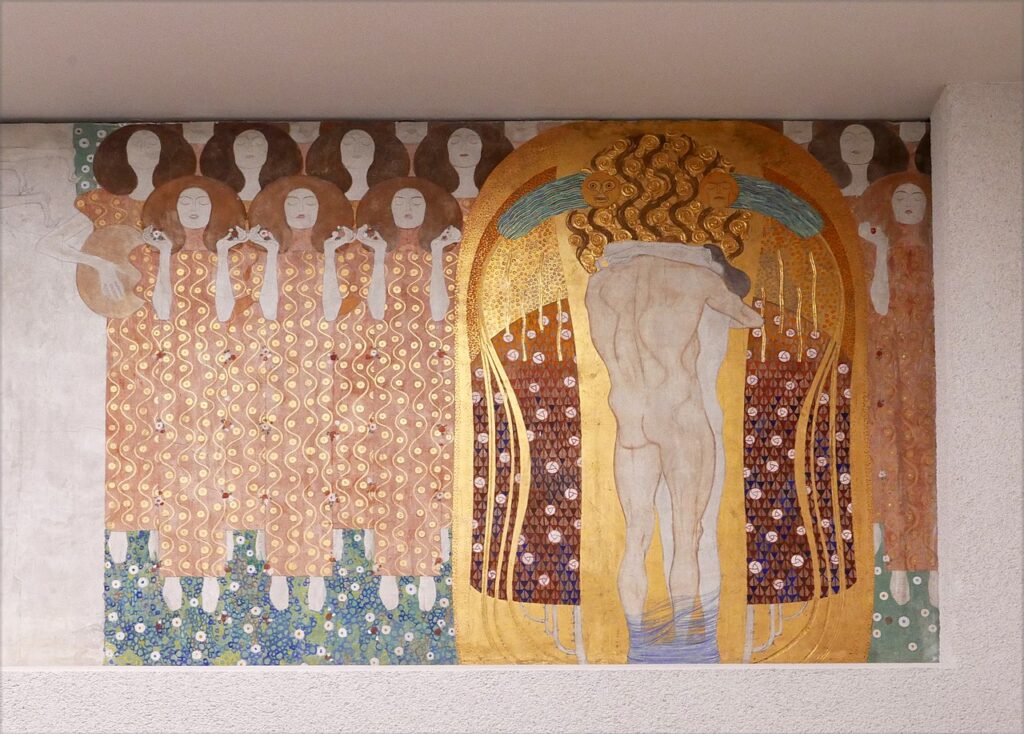
The Ravenna Awakening
In 1903 Klimt was searching for inspiration. He was 41 years old, and despite his success, he found himself at an impasse. On a trip to Italy to gaze upon the old masters, he stopped into the Basilica of San Vitale in Ravenna. The church is most famous for its incredible Byzantine mosaics. In fact, St Vitale boasts the largest and best-preserved mosaics outside of Istanbul. In a letter, Klimt stated that “the mosaics are of incredible splendour.”
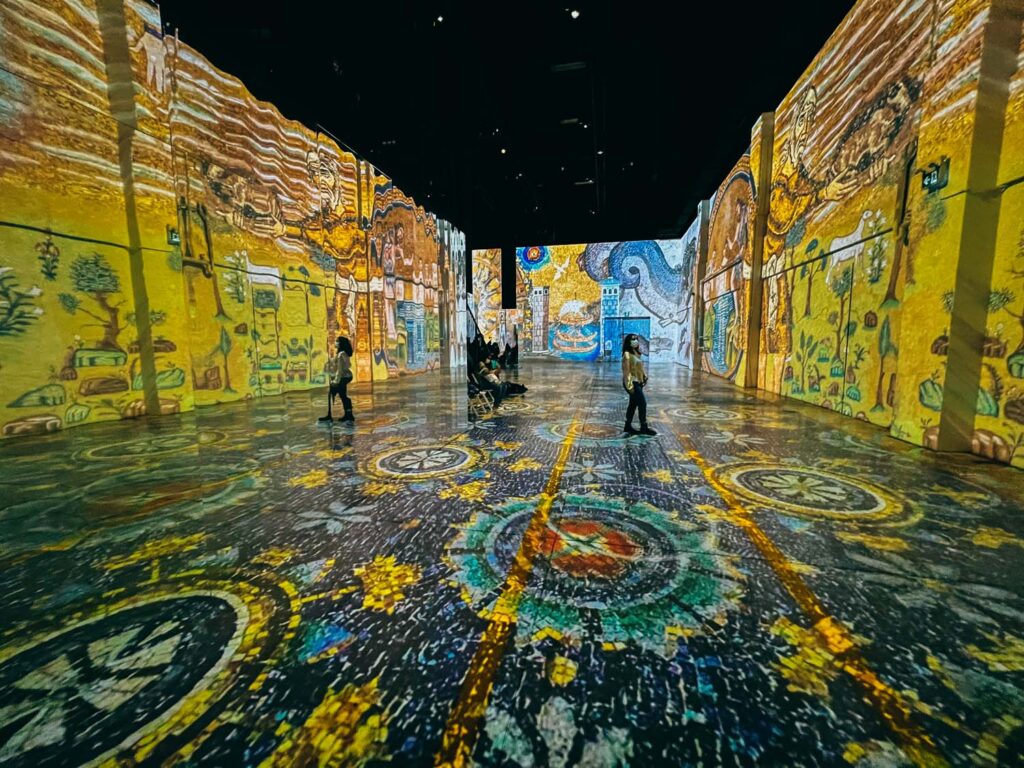
As Klimt’s father was a gold engraver, goldwork had been a part of his life for as long as he’d lived. And yet, this was the first time he had allowed the gold to overwhelm him and enter fully into his art. He was amazed at how the light reflected onto the gold. The light seemed to change the entire piece as the shone into the room. It seemed so expressive and was yet another element Klimt could add to his paintings to bring them to another emotional level.
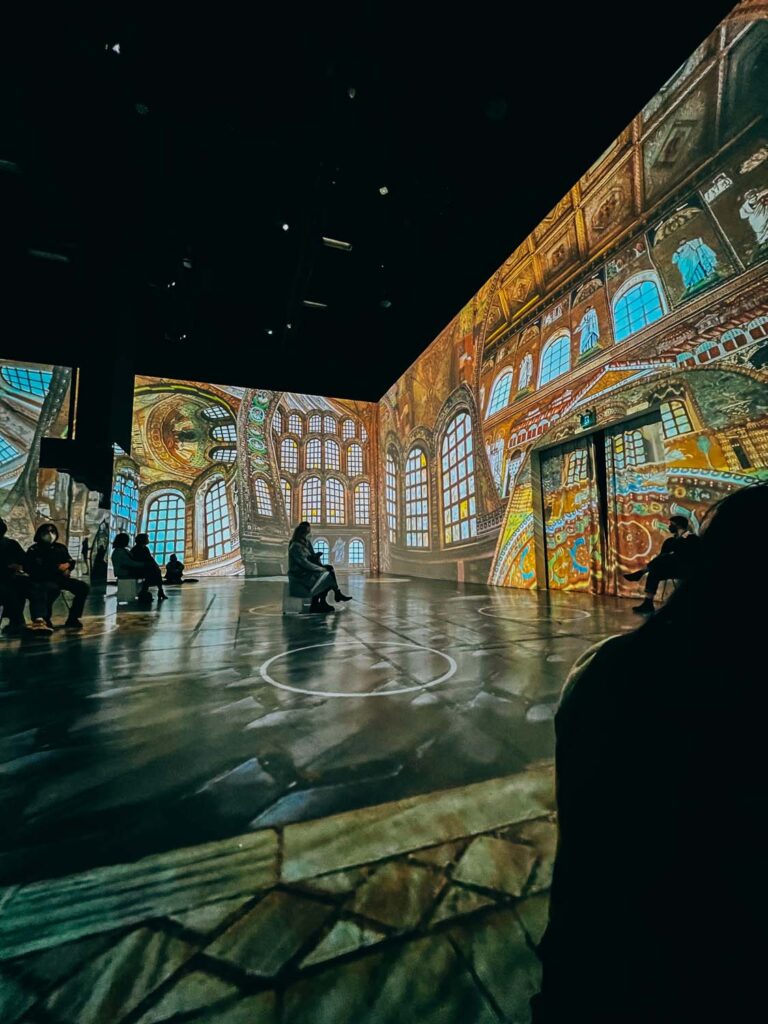
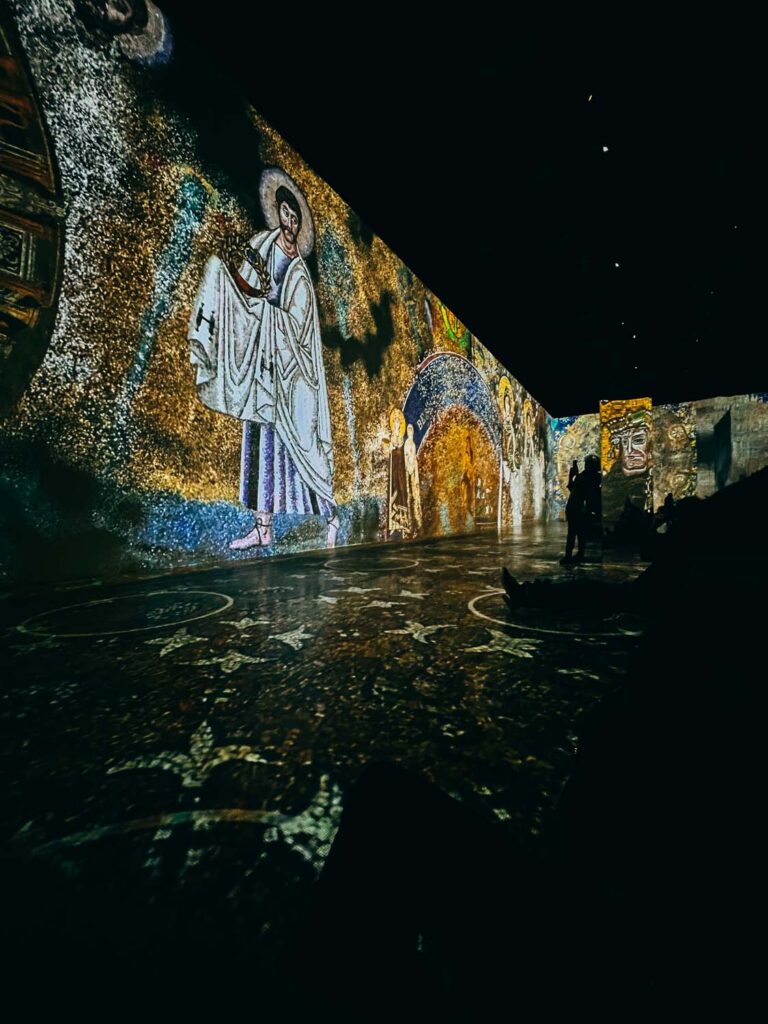
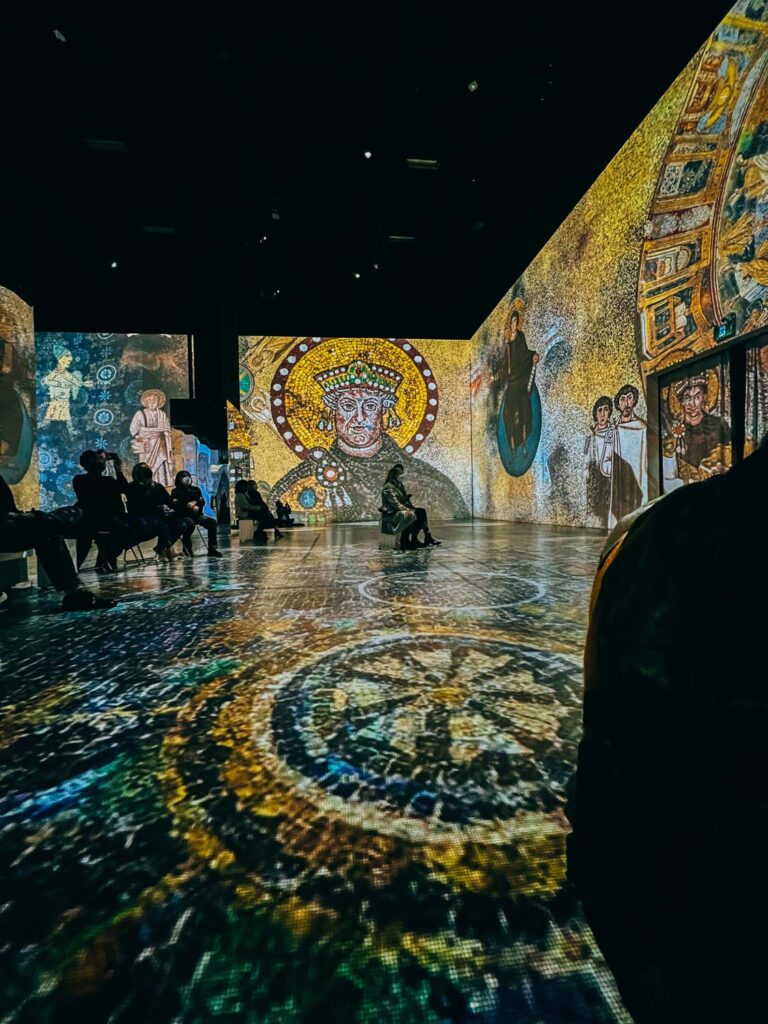
Portrait of Adele Bloch-Bauer
One of the first paintings Klimt made upon his return to Austria was the Portrait of Adele Bloch-Bauer. In this portrait, you can see precisely how the mosaics of Ravenna translated themselves into his paintings. Adele is sitting against this brilliant golden starry background. She wears a beautiful triangular-shaped dress, made up of rectilinear forms of silver and gold leaf. There was so much gold and silver leaf in the painting, the total cost of the work of art was as much as a large house in the middle the Vienna.
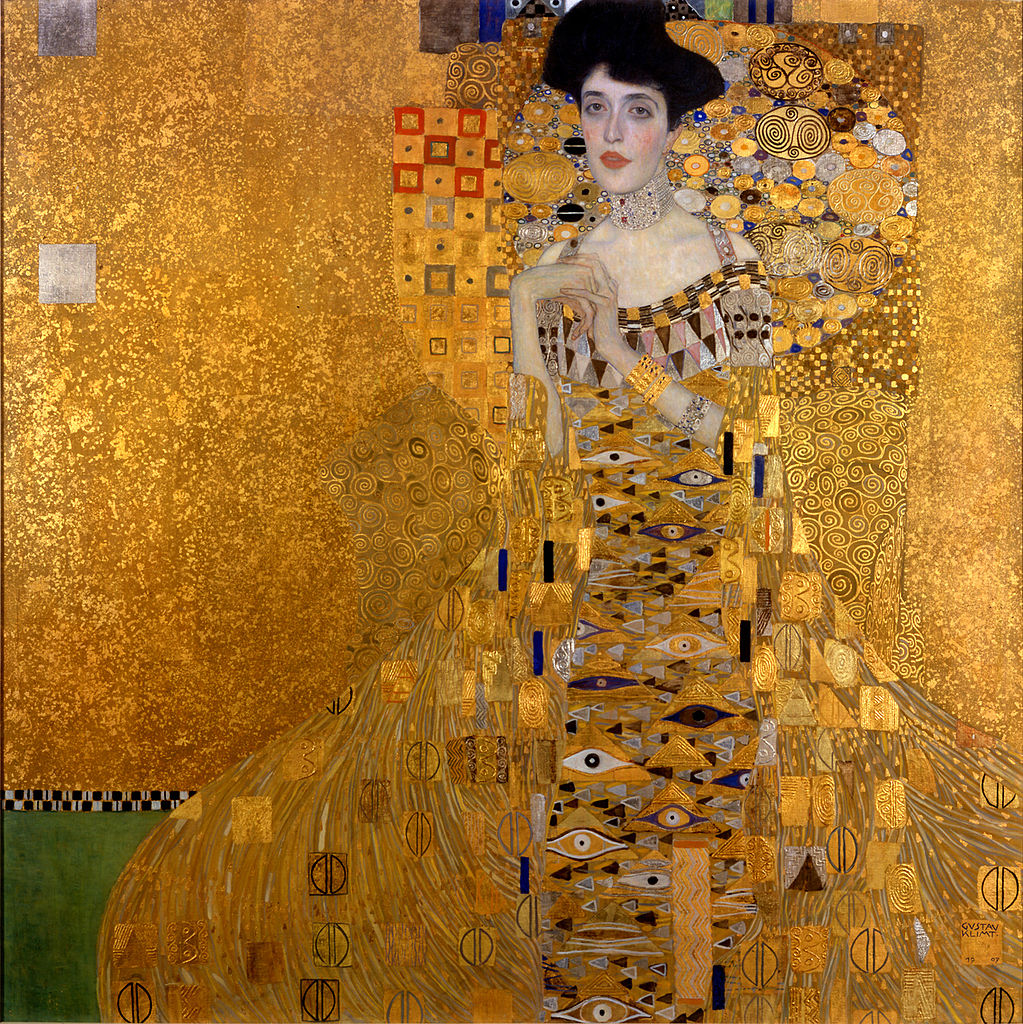
Each part of her dress and body is decorated in a different pattern, creating this patchwork quilt of symbolism. In parts of the paintings, the dress blends so perfectly into the background to the point where the subject becomes one with the background, almost melting into it.
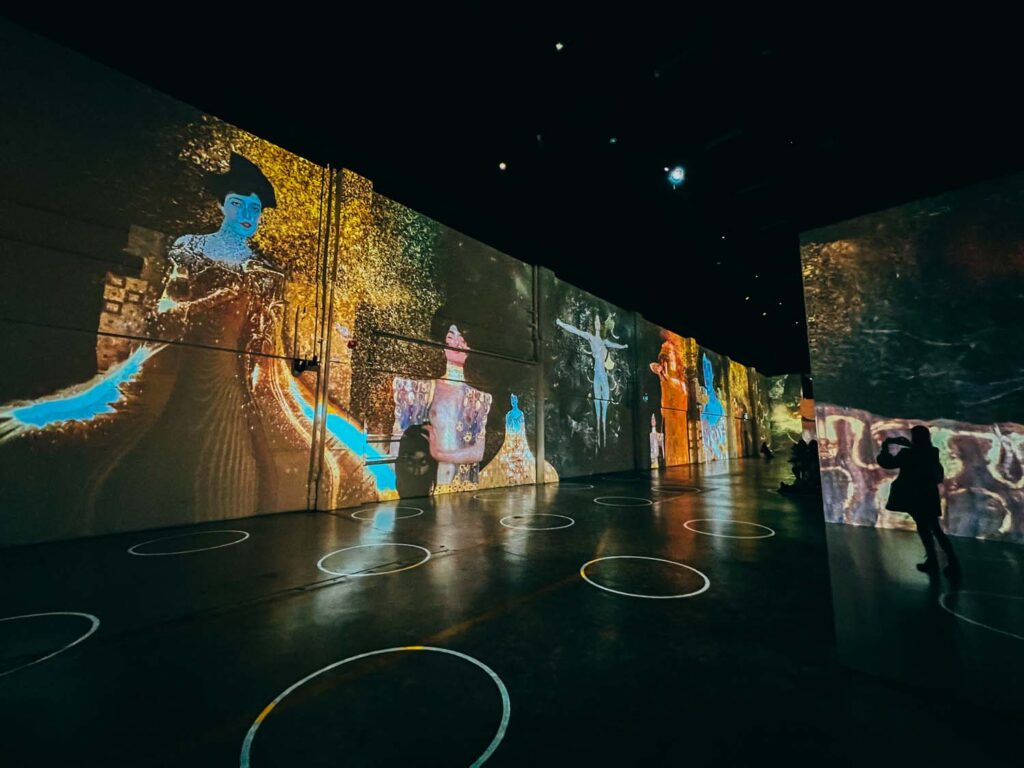
Egyptian Influence
Some of the symbols used within the painting reflect Klimt’s interest in Egypt. In this painting, the Eye of Horus is repeated along the front of her dress. Egypt’s Book of the Dead is one of the most richly decorated texts from that era, and Klimt was enthralled with its imagery. Klimt was also interested in the idea of life after death. In this painting, Adele seems like she is floating in an ethereal place, which is not of this plane of reality but perhaps of somewhere between life and death.
It is rumoured that Adele was also Klimt’s model (and perhaps lover) for the painting of Judith and the Head of Holofernes. The two women bear many similarities, and the large chocker around their necks are almost identical in both portraits. Although this cannot be proven, the love and care Klimt took in her painting is irrefutable.
The Saga of the Portrait of Adele Bloch-Bauer
Long after Klimt’s death, the painting of Adele went on to transcend art history and become one of the most famous paintings in the world. During WWII, the painting changed hands multiple times, attempting to evade destruction by the Nazis. Although Adele had originally written in her will that the paintings be given to the National Viennese Art Gallery upon her death, this was because she died long before the Nazis invaded. A new will by her husband had been created to ensure the painting was kept within the family. But this was ignored and the museum kept the painting for years even though it had been sold to them by a Nazi sympathizer.
Eventually, the great-granddaughter of Adele Bloch-Bauer was able to open a new case to get the painting returned. She was able to file the case over in America where she now lived under a new law. She was finally successful and despite her long fight, she found she needed to sell as such an expensive painting just couldn’t be kept in her home. The painting was set to be bold at auction but ended up being sold privately for a whopping $135 million.
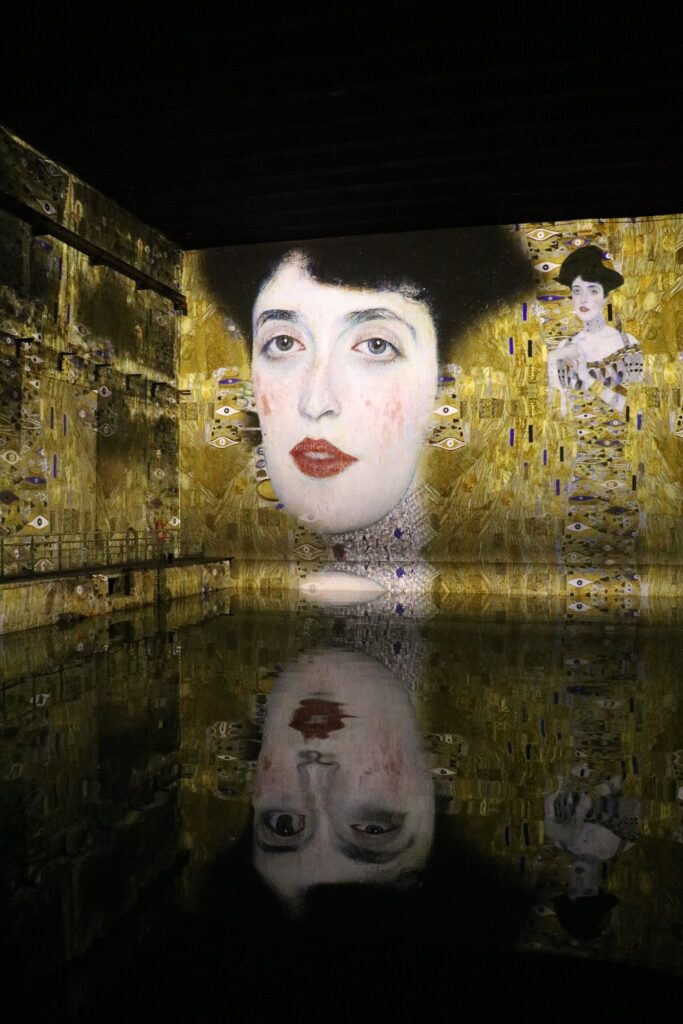
The Tree of Life 1905
The next famous painting in Klimt’s golden period was The Tree of Life, or the Stoclet Frieze. The Stoclet Palace was the home of a wealthy Belgian who commissioned several of the Secessionist artists to make art for his new palace. This piece he commissioned by Klimt was to hang on a large wall inside his dining room.

The triptych features a large swirling tree in the centre. To the left is a single woman draped in a large patterned cape, and to the right is an embracing couple. The couple’s embrace mimics the same pose of Klimt’s most famous painting, The Kiss. In the Tree of Life, Klimt continued to explore the themes of Egypt symbology he began to explore in the Portrait of Adele. The Tree of Life is an important symbol in many cultures. And in most cultures, the tree symbolized the connection between the world of human beings with that of the gods and spirits. Another ancient symbol incorporated into the painting is the repeated coils and spiral reminiscent of ancient Mycenaean.
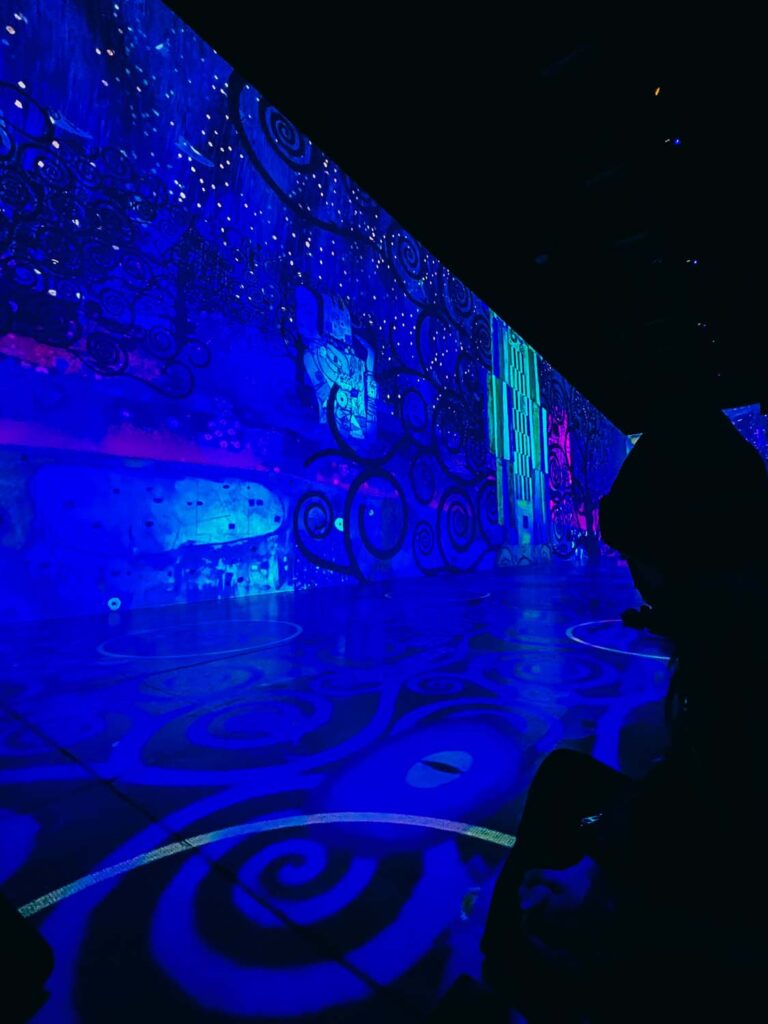
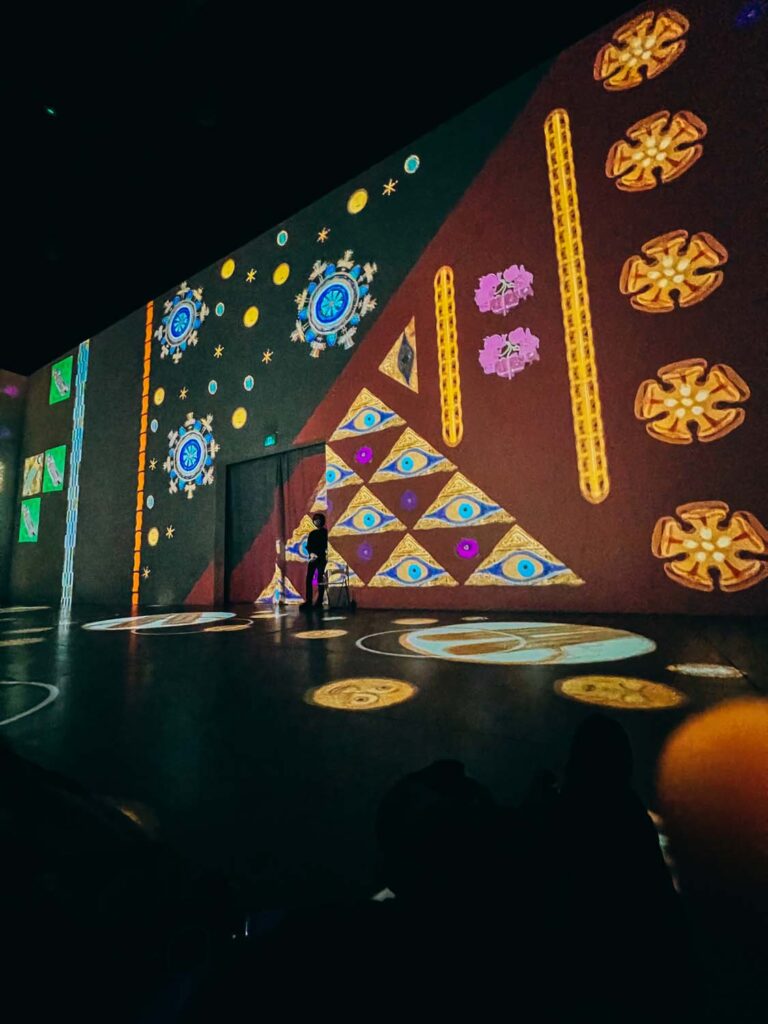
Eye of Horus
The tree’s trunk is covered in the Eyes of Horus looking out at the viewer. Perched in the centre of the tree is a great raven or falcon. Horus was often portrayed as a falcon when the god came down to earth. Horus had two eyes, one made of the sun and the other made of the moon. The morning and the night, life and death. Just as Horus represents the circle of life, as does the tree. The tree’s swirling branches represent the different directions and ways life is a complex circle. The tree’s branches touch the sky, and its roots reach the ground, creating a connection between life and death. As if to tell the viewer there is no real end, only a new beginning in a new circle.
The woman on the right is called Expectation. Her large dress features huge pyramid motifs throughout her robe. Her face is also heavily inspired by Egyptian hieroglyphics. On the right, we have the couple who are called Fulfillment. This couple was once called the Lovers. But this name was too close to the Kiss which also shares a very similar pose. The couple is standing in a loving embrace. But in this pose, we do not see the man’s face at all as he has his back to us. The man seems to fall into the women’s arms, as the patterns on their dresses meld together as if they are becoming one. Perhaps Klimt’s commentary on the meaning of life, and how to be fulfilled, is to be loved.
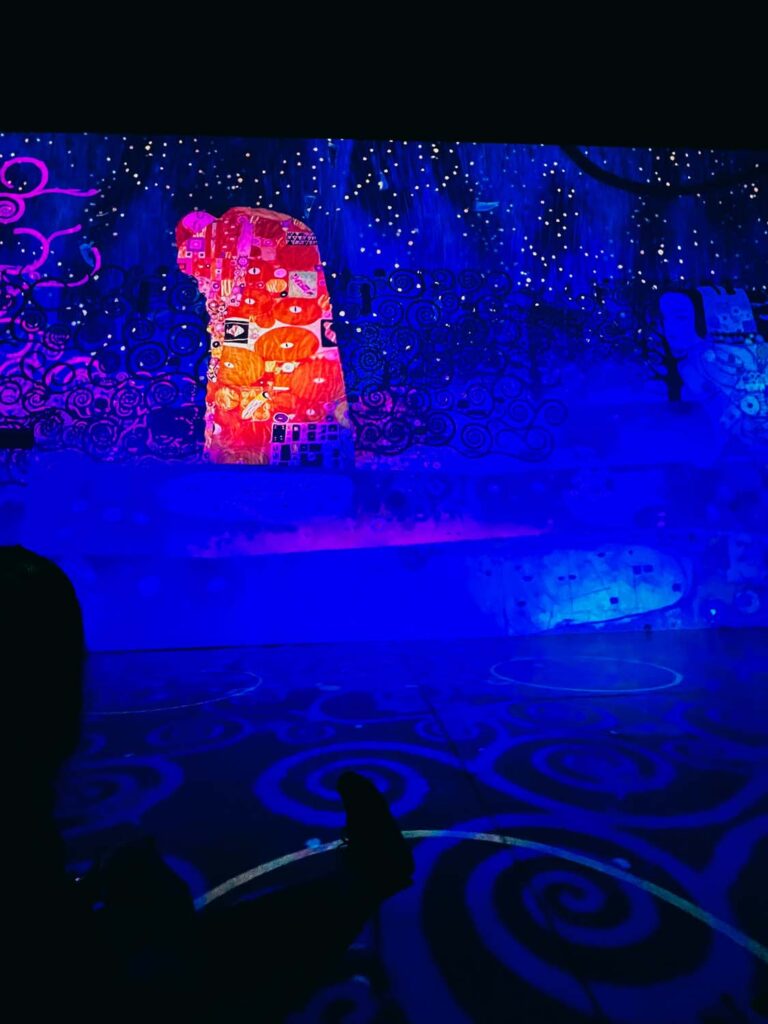
The Kiss
The most famous of all Klimt’s paintings is The Kiss. It is often quoted as being one of the most romantic paintings in the world. This painting was one of the most popular posters sold at university fairs and hung on many people’s walls I lived with throughout the years. It has almost become a parody of itself but nevertheless, its power is truly extraordinary.
A couple stands in front of a starry, golden background. The ground upon which they stand seems to be blessed with fertility. Flowers bloom in a thicket in vibrant colours beneath them. So dense the grass cannot even be seen. The couple stands, almost on the edge of the earth, in a passionate embrace. Both the foreground and background are painted on the same plain. There is no depth to the painting. This reflects Klimt’s inspiration, the Ravenna mosaics. The flatness of the mosaics seemed to enthrall him, and it was through the use of light and texture that the mosaics would sparkle and shine and be given depth. But of a different sort.
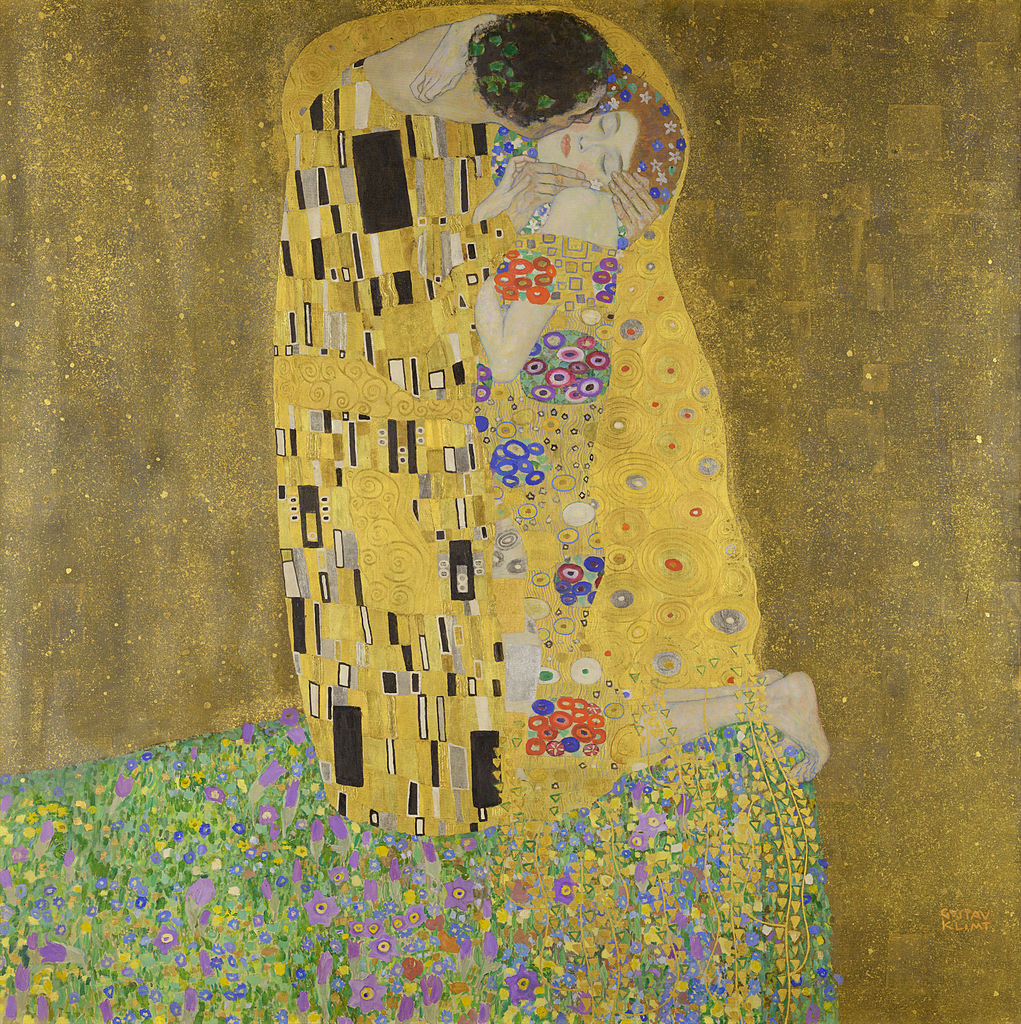
Man vs. Woman
Unlike in the Tree of Life, this couple’s clothing is made of differing patterns. The man’s large robe is painted with dark geometric patterns. His robe features straight lines and more classically “masculine” colours of blacks, greys and browns. The men’s head is entangled in a crown of green vines, like the Laurel wreaths which symbolize man’s victory.
The woman also has a spray of flowers women into her hair but not as a crown, perhaps showing her submissiveness. Her dress is also distinctly more colourful. It features swirling organic forms which are classically more feminine. The circles almost resemble a women’s womb. From the bottoms of her dress, golden vines seem to creep downwards, perhaps another hint at the idea of women’s fertility.
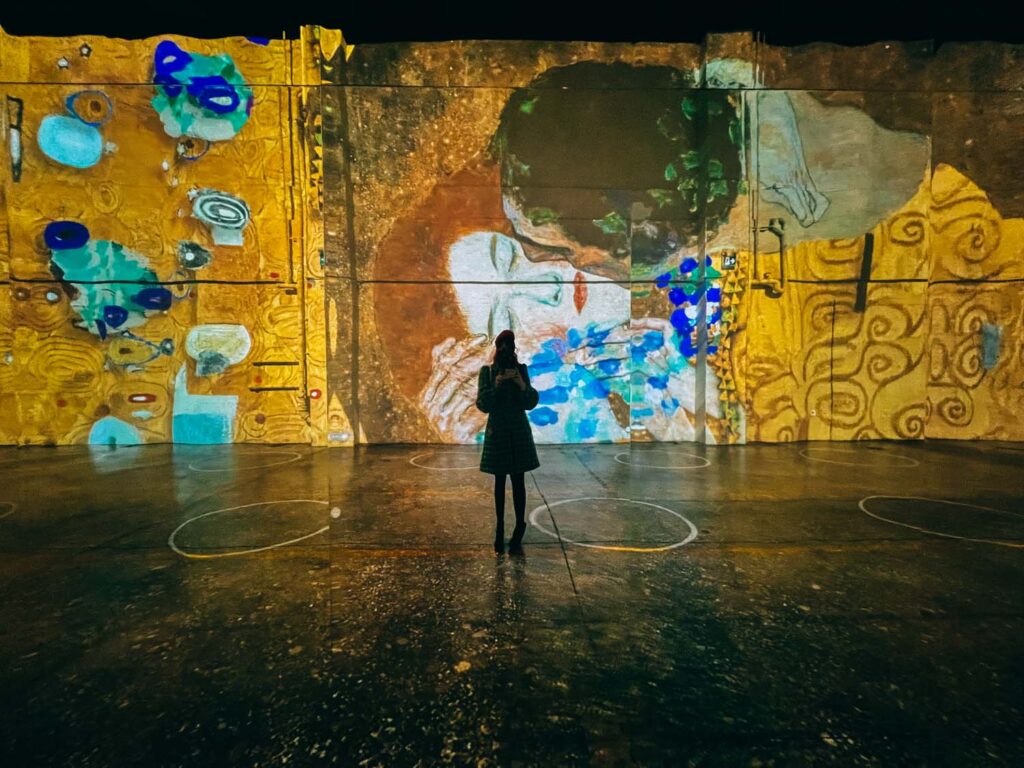
Orpheus and Eurydice
Many art historians refer to the couple in the scene as mythological characters from the Greek story of Orpheus and Eurydice. Orpheus fell madly in love with Eurydice, and yet shortly after they were married, she was bitten by a snake and died. Orpheus, in utter heartbreaking despair, goes to the underworld to retrieve his lost love. As he was a talented musician, he managed to get past many of the obstacles in his way using these talents. When he finally found her, Hades told the lovers they could only leave on one condition. That they never look back.
The couple agreed, and after finally climbing out of the underworld and seeing the beauty of the golden sun and green grass on the earth’s surface, Orpheus turned back to look at Eurydice to see her reaction. But when he did, she disappeared forever. Klimt has captured that moment for us, frozen in time. The moment as Orpheus turns back to kiss Eurydice just before she disappears is preserved in golden amber. Her toes are curled under and clutch the earth, on the edge of the underworld, to which they just exited. That grip shows to the viewer how much she doesn’t want to let go. And lose her love forever. Despite knowing the ending, we want to see a different result for these passionate lovers. And if we cannot change the course of history, let us therein just reveal in this moment with them.
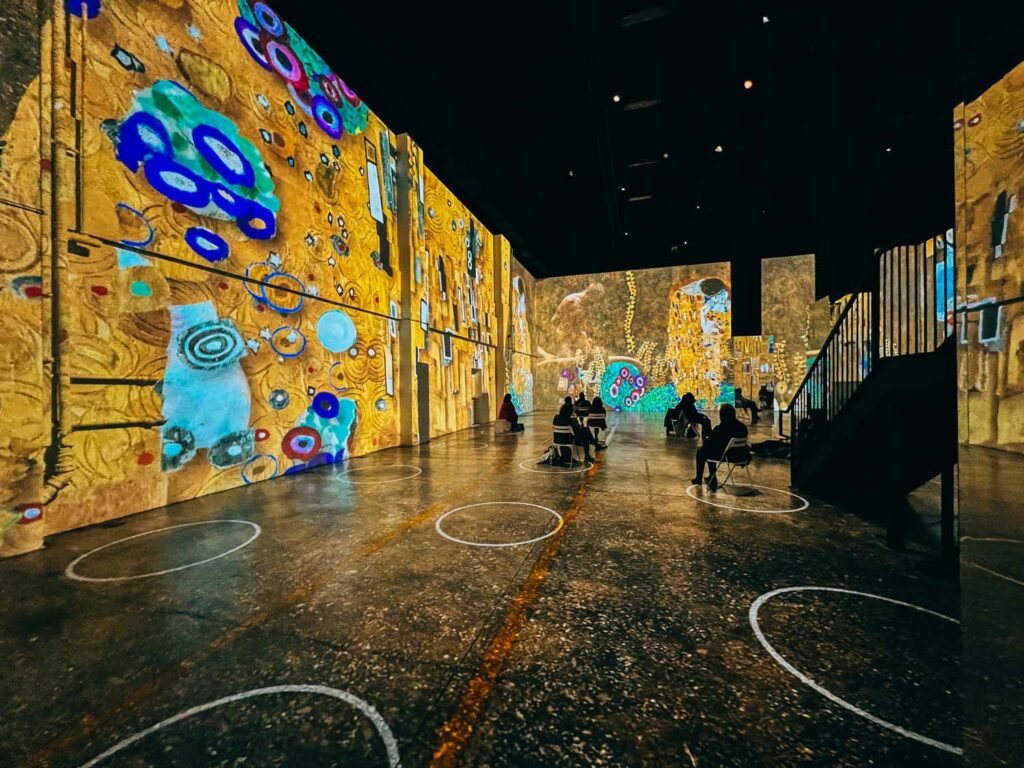
Emilie Flöge?
Many people think the woman who modelled for ‘The Kiss’ was Klimt’s long-time lover and companion Emilie Flöge. Despite never being married, the two were truly soul mates. When Klimt died, the last words out of his mouth was, “Emilie must come.” While the man in the painting doesn’t resemble perfect Klimt himself, I like to imagine this is his idealized version of himself and captures their unique romance for eternity.
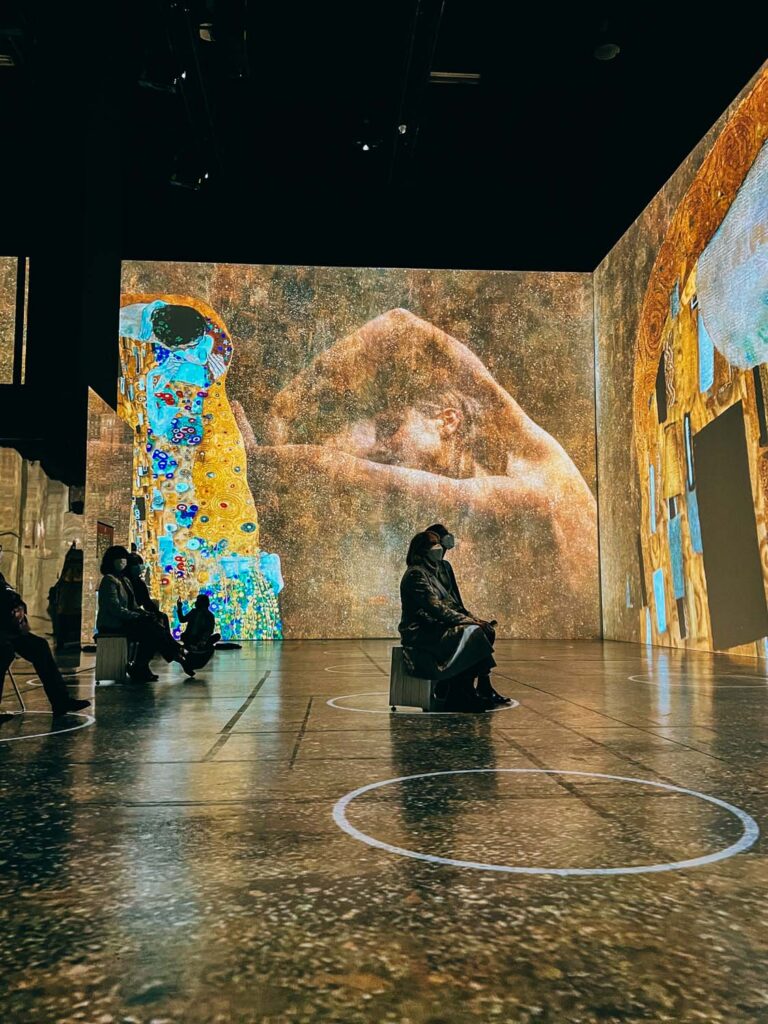
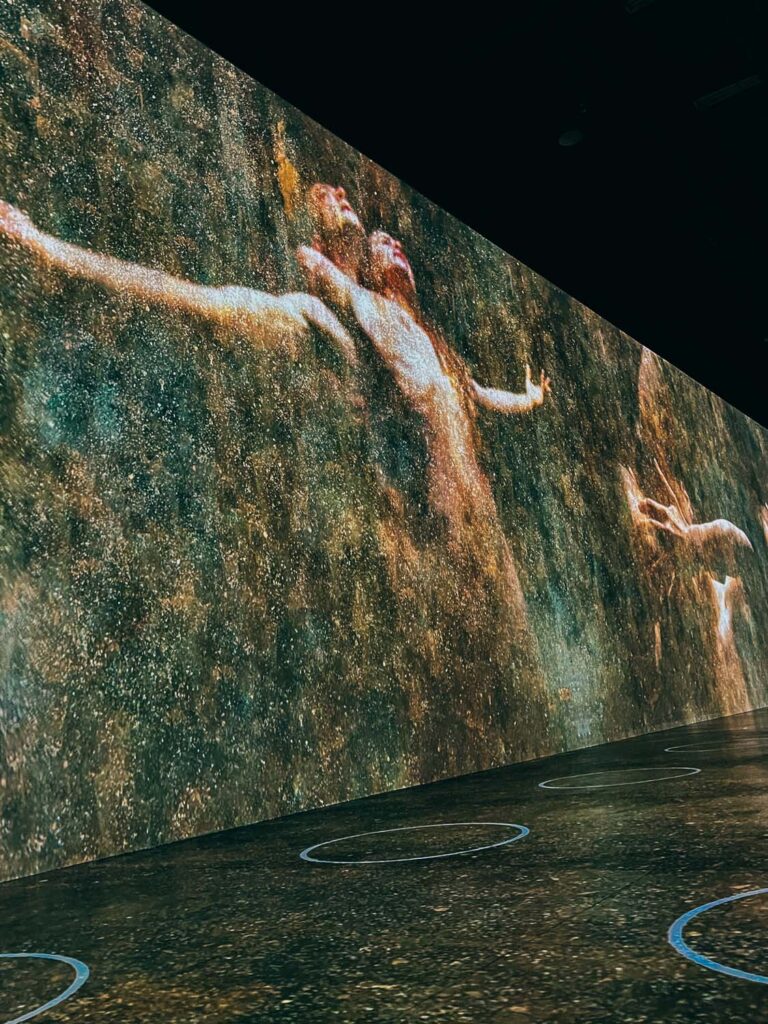
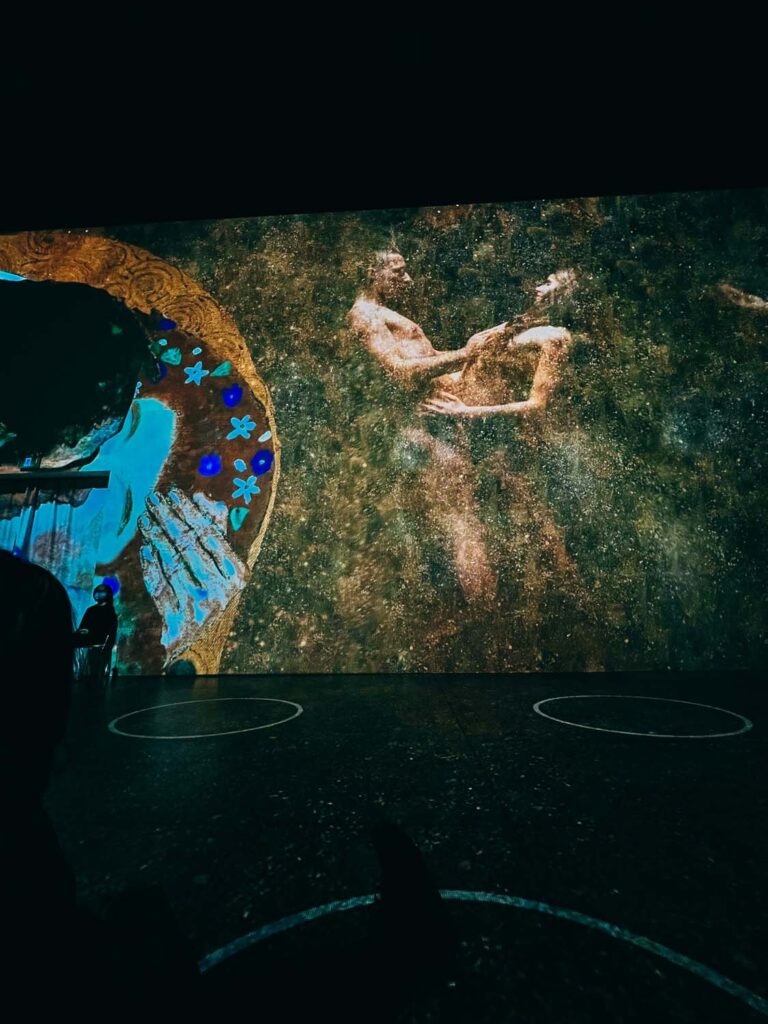
En Plein Air
After the fervour of his golden period, Klimt began a new cycle of art which was inspired by his choice to start painting outside. ‘En Plein Air‘ or Plein air painting is the act of painting outdoors. This period of painting did away with the gold and silver gilt. It was replaced with a more subdued palette and subject matter. He employed a lot of purples, lilacs and salmon tones in these paintings, which some people call his “purple period.” Klimt was so interested in this new form of painting he re-made his portrait of Adele Bloch-Bauer in this new style. Since she was so important to him. He even made a painting of her daughter despite the fact that otherwise Klimt almost never painted children.
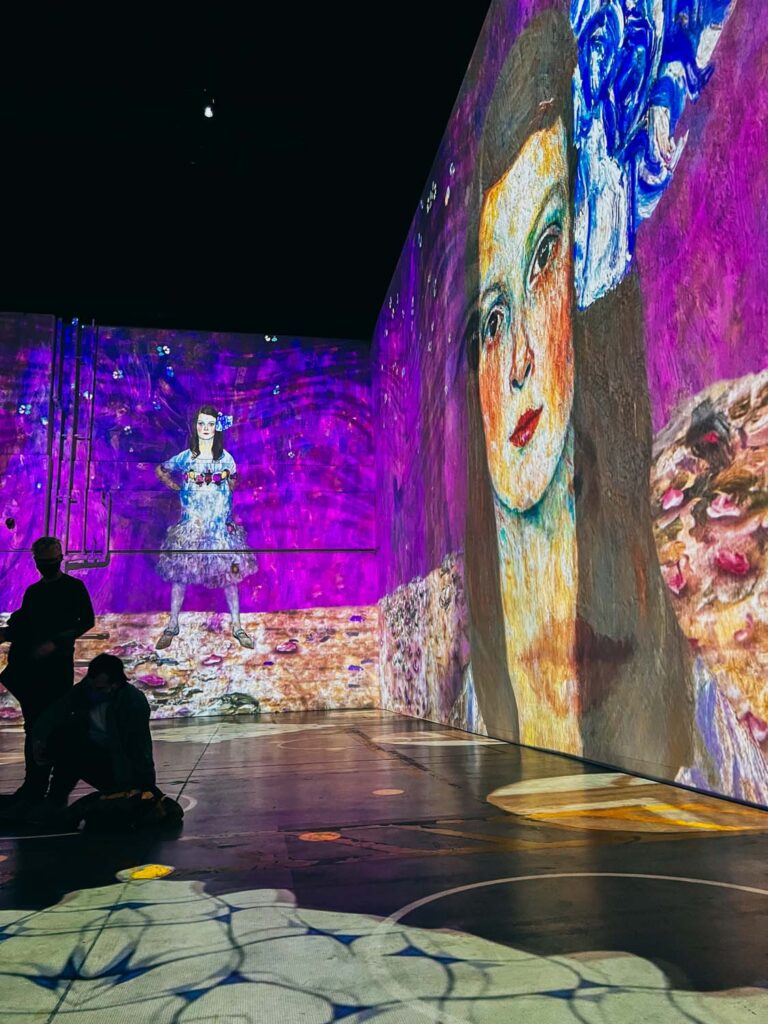
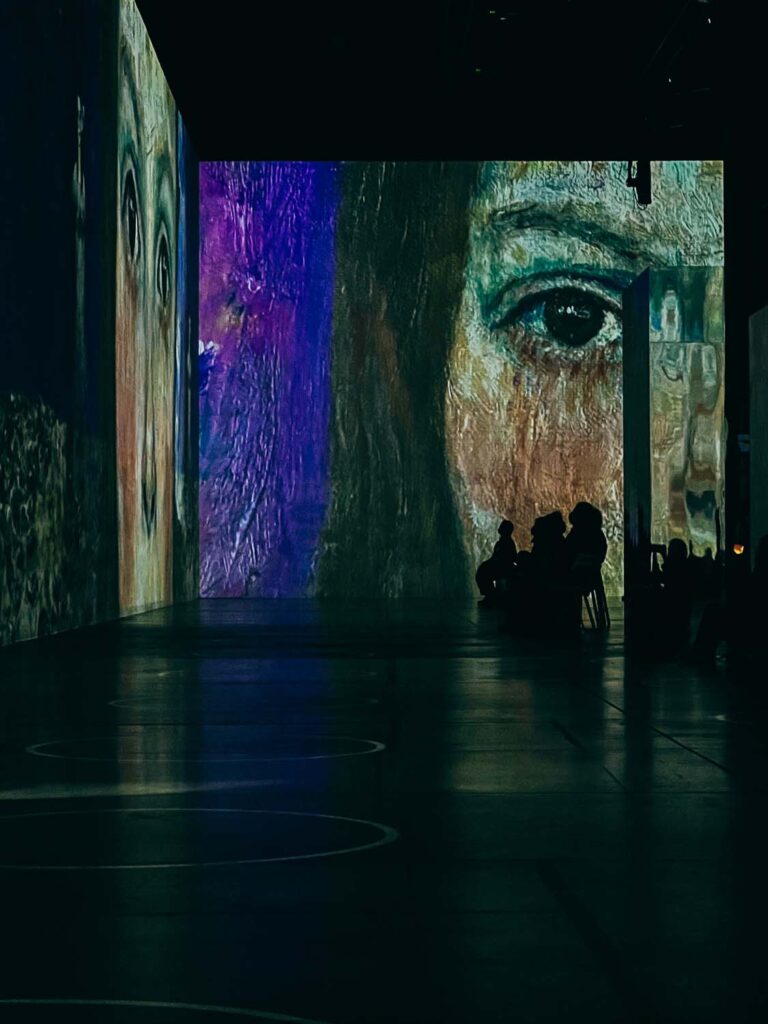
The majority of these pastel paintings surrounded his favourite subject; women. Most of them were so erotic they could not be exhibited at the time. Klimt featured portraits of female lovers wrapped in a beautiful embrace that shocked the public at the time in Vienna. But Klimt didn’t shy away from portraying all aspects of sexuality. Despite the restrained pallet, Klimt nevertheless continued to play with stylized backdrops and floral patterns. The paintings looking more and more like a kaleidoscope.
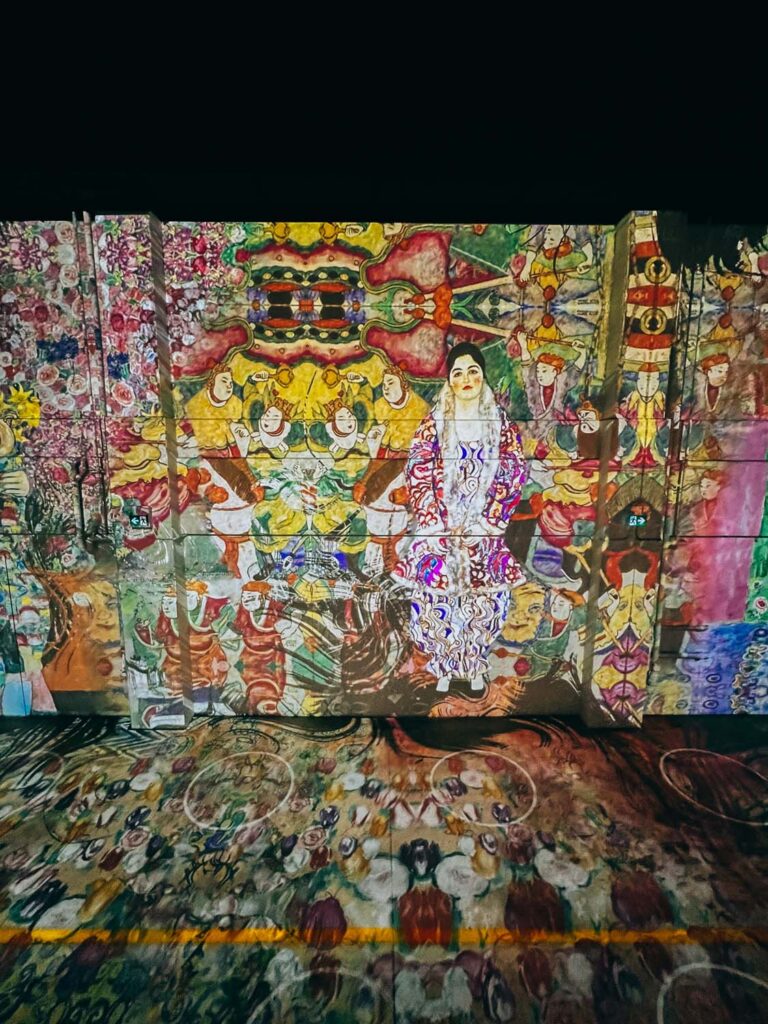
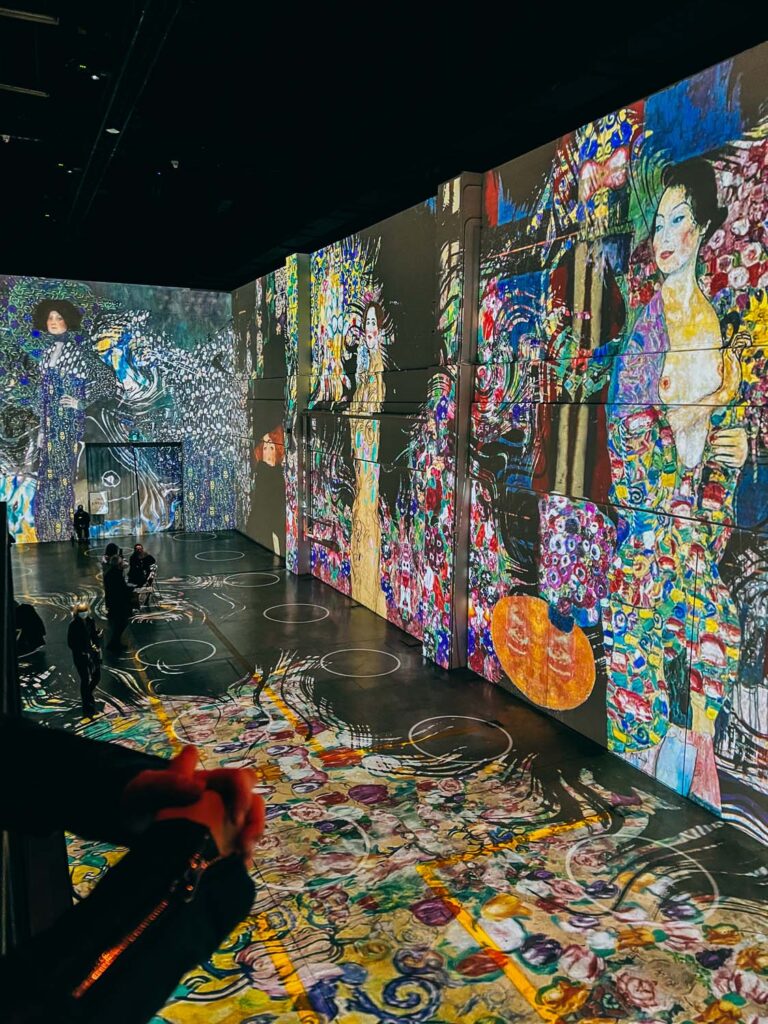
Klimt’s Death
In many of Klimt’s paintings, he seems to be interested in the idea of disease and epidemics. It is therefore pretty ironic that Klimt himself fell ill to the worldwide influenza epidemic of 1918. It took his young life at the age of 55 years old. One has to imagine how many other incredible paintings he would have made should he have lived past this epidemic. He was buried at the Hietzinger Cemetery in Vienna. He lies underneath a rather plain tombstone with only his name emblazoned on the granite but written in a perfectly Secessionist font. A subtle memorial to all the great works of art he helped create, in addition to his own works, in the founding of this group.
Klimt truly was a visionary who saw the world in a way that it is almost impossible to find its equal. While the Kiss might be his most memorable work of art, there are so many other pieces you should seek out and learn more about. They tell the real story of his life and by seeing them all together in an exhibition like Immersive Klimt is a unique experience I think is worth a visit! Let me know in the comments what your favourite painting is or what you thought of the exhibition.
Happy Travels, Adventurers!
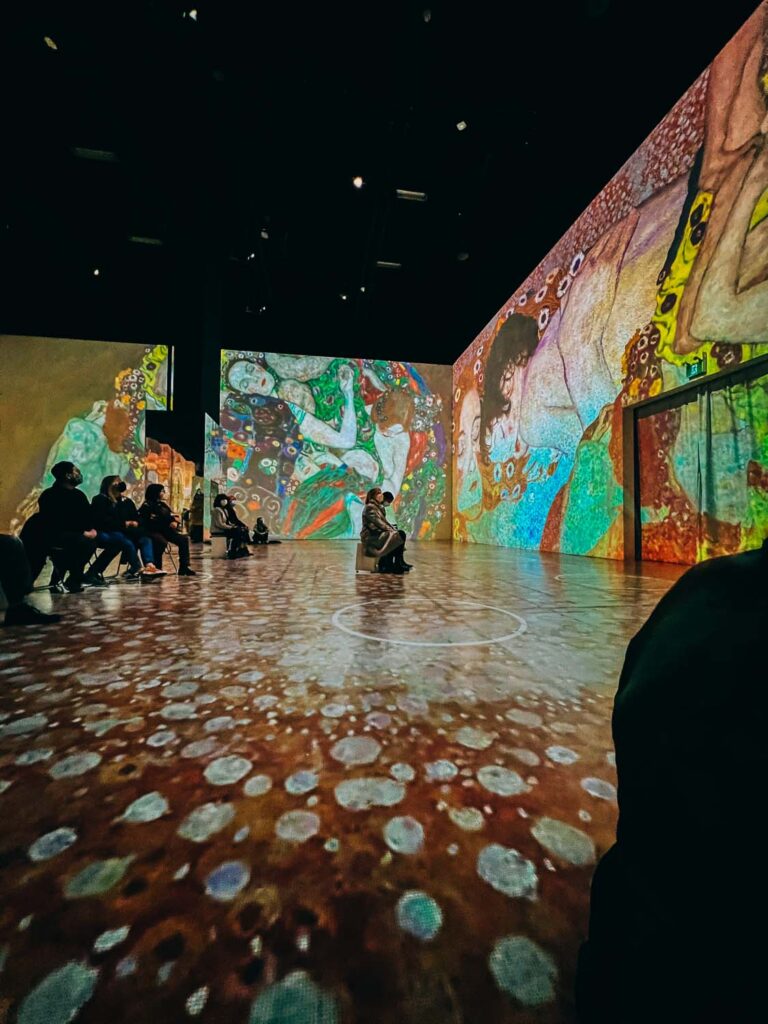
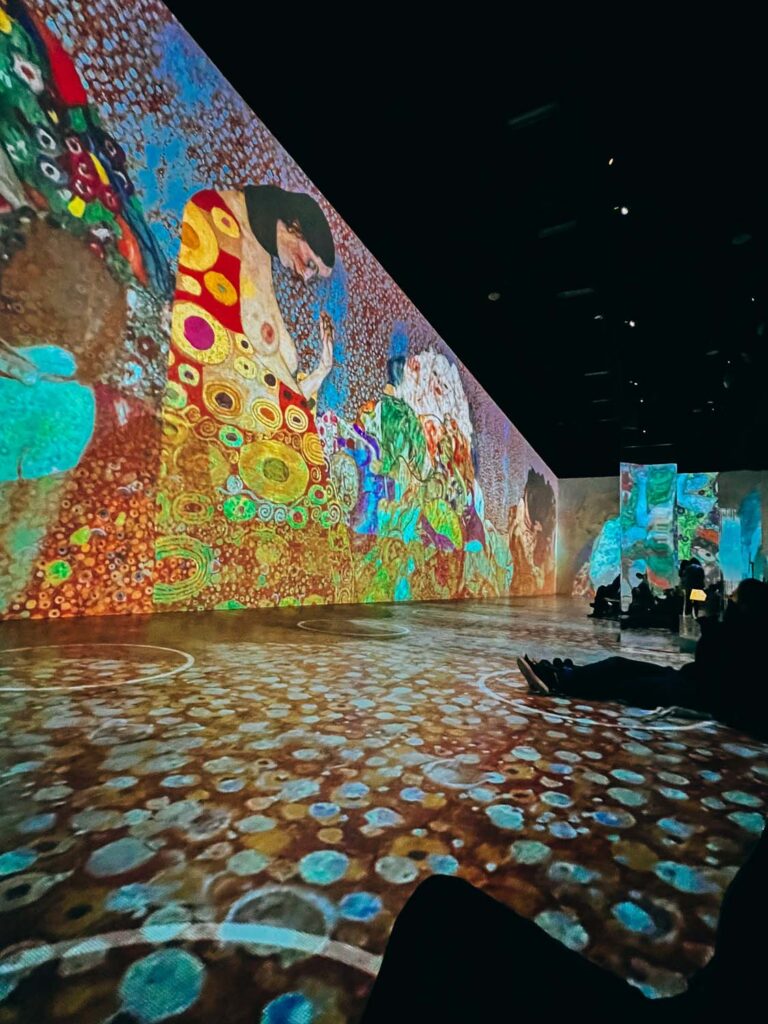
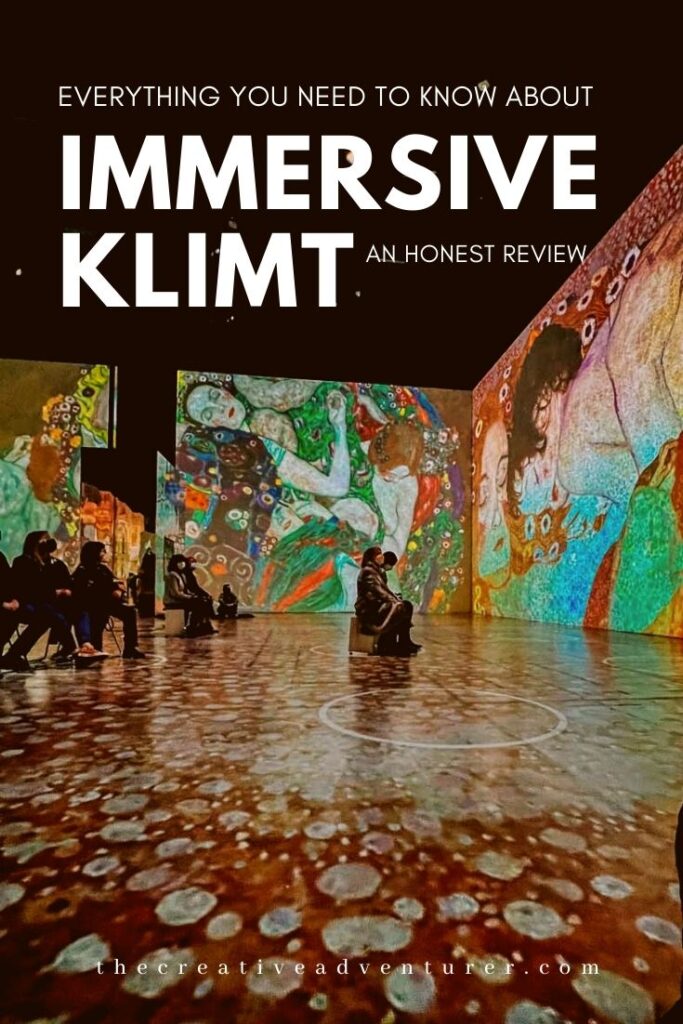
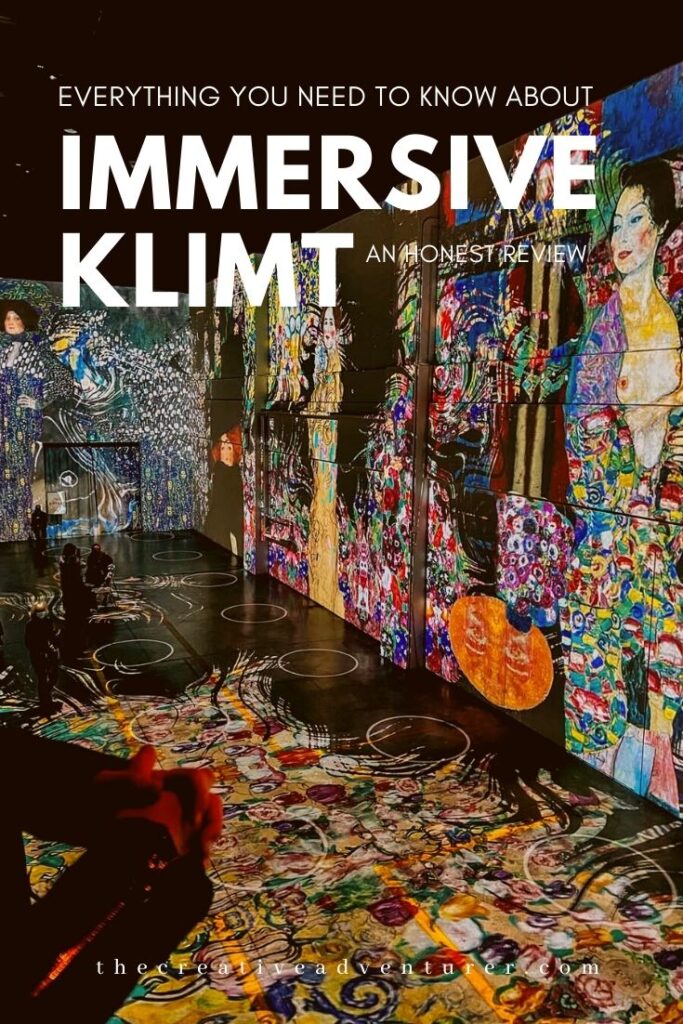
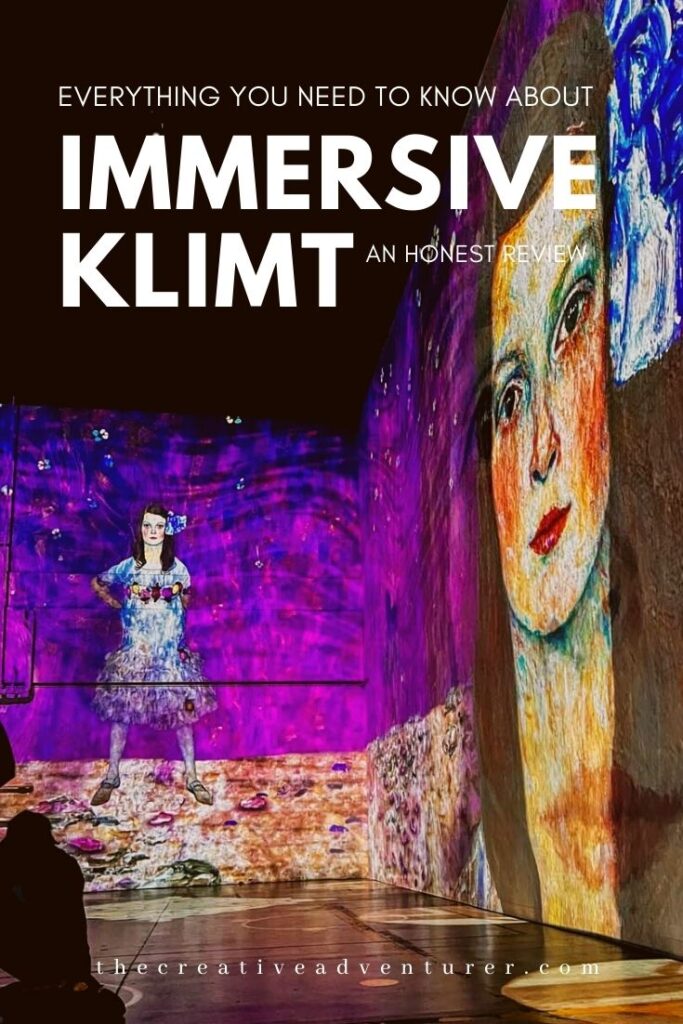
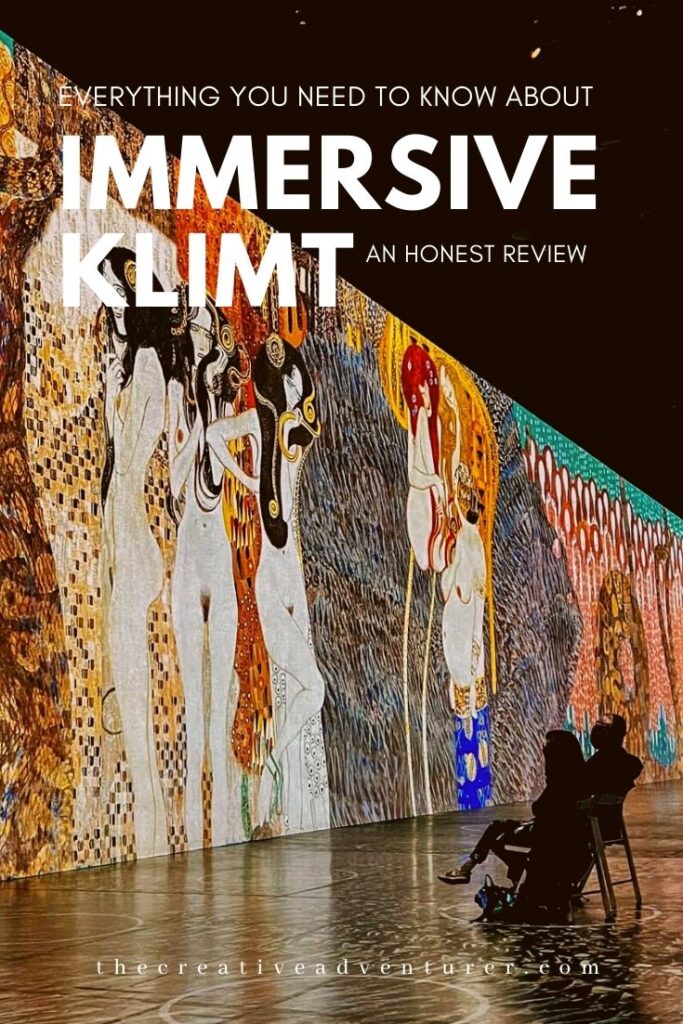
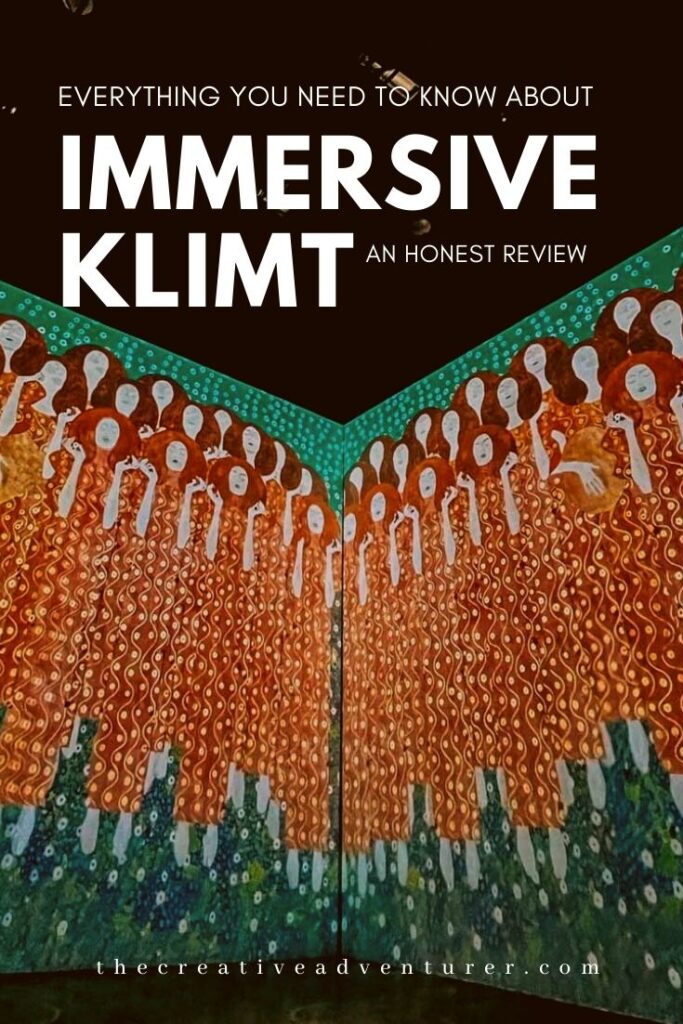



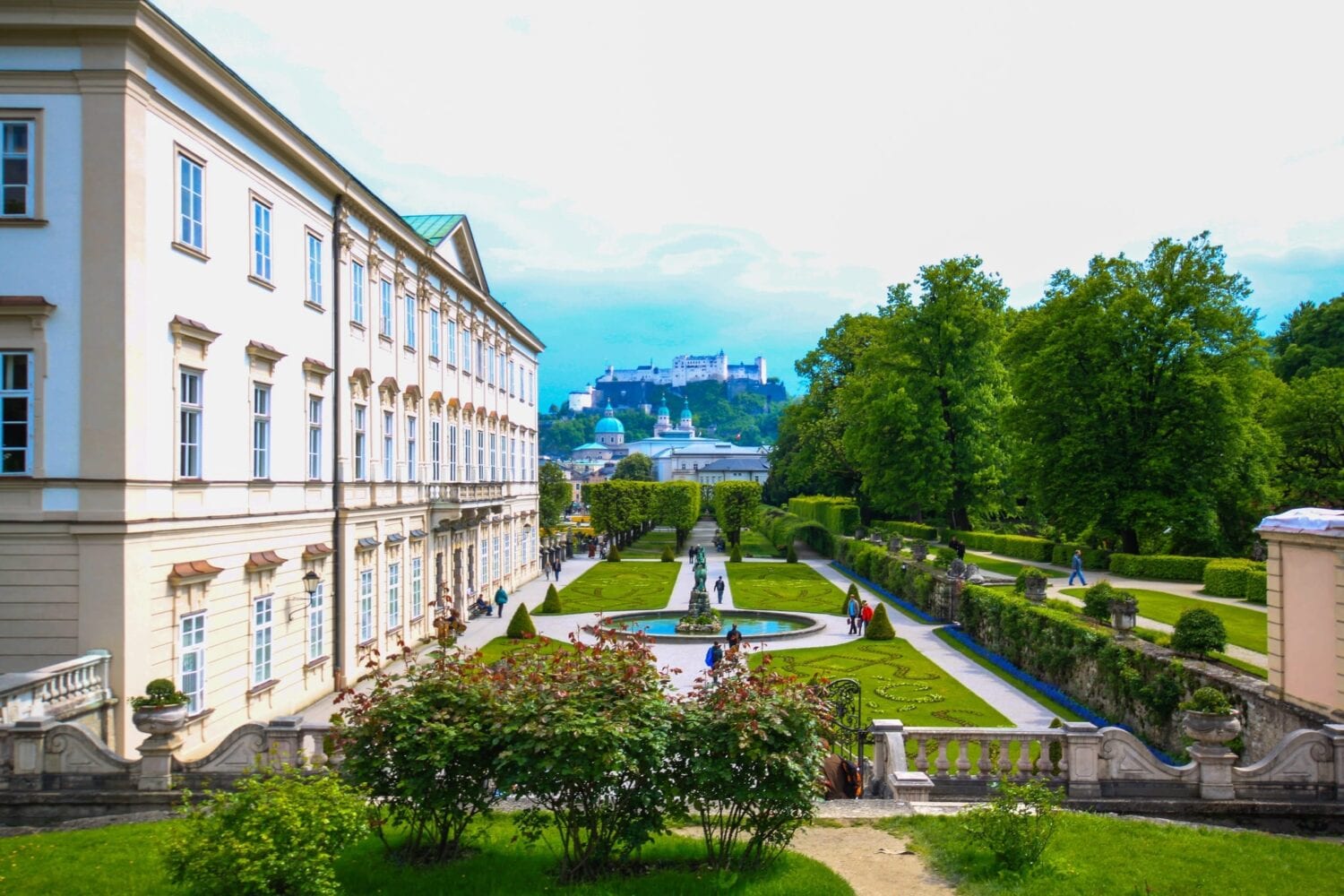
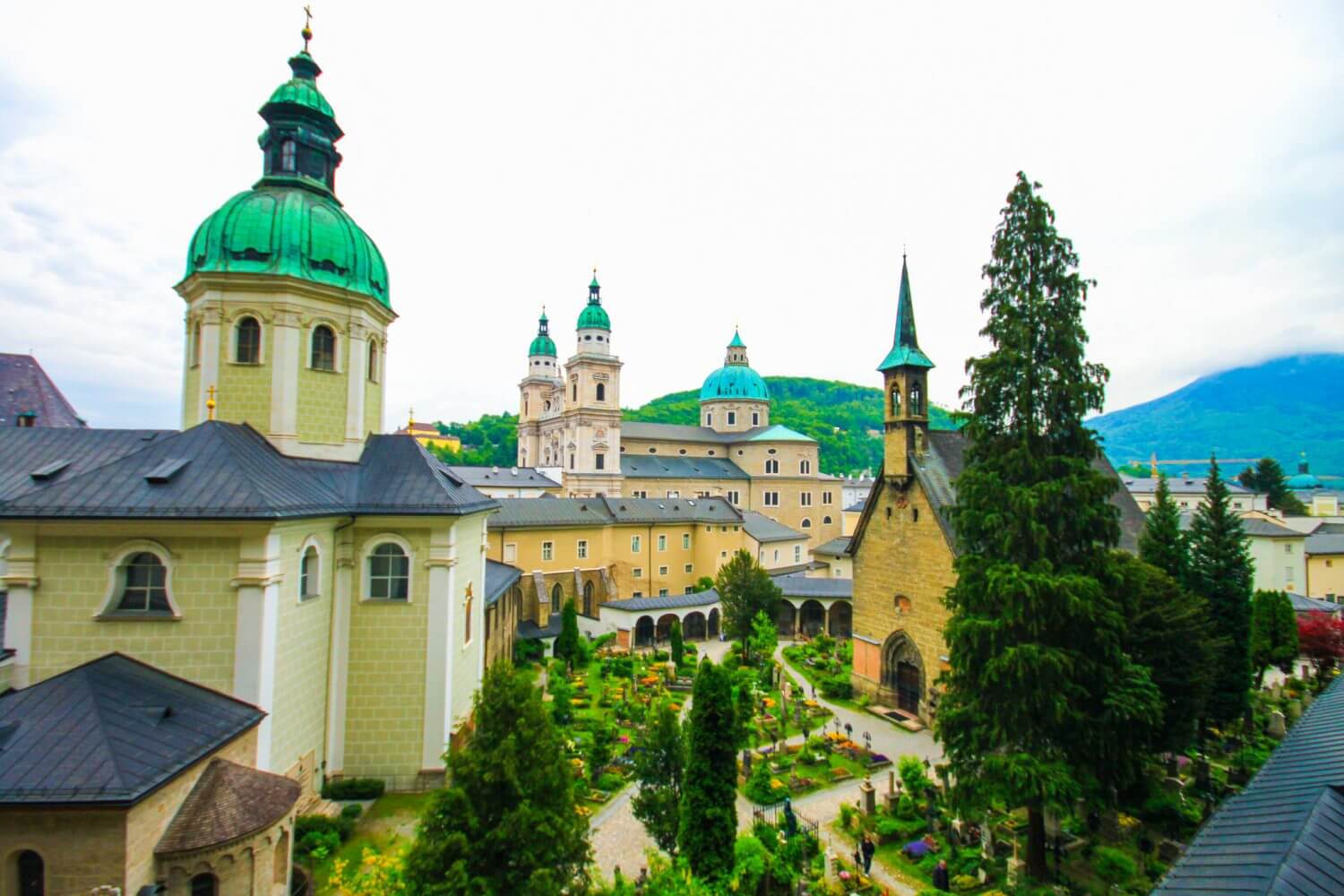

Leave a Comment